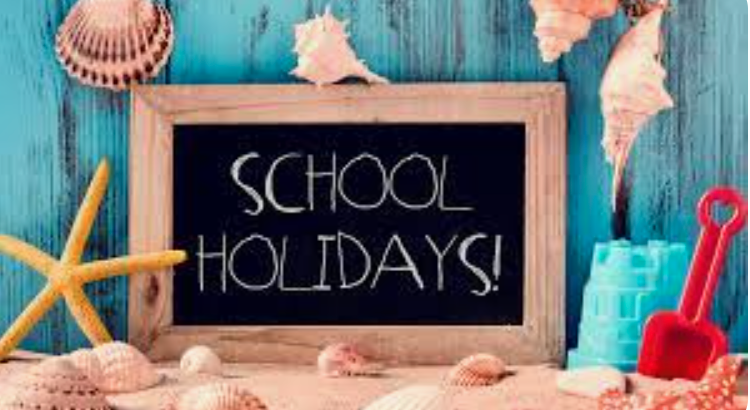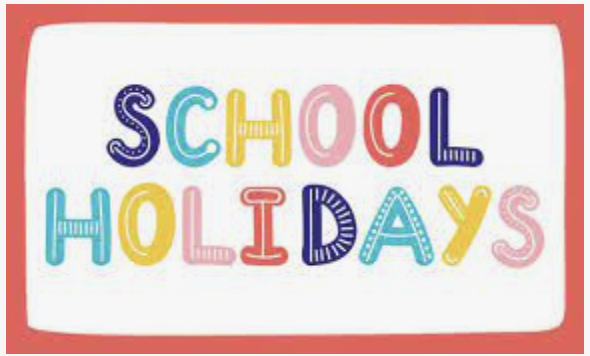7C2 Global Studies
Section outline
-
-
You are to integrate the knowledge and skills learnt in Global Studies and English to create an information poster. Your poster must include important research facts, a contextual static image and a paragraph explaining the symbolism of this static image.
-
-
Kia ora 7C2,
A warm welcome to Takutai Whanua. My name is Mrs Raeesa Dada and I am you Global Studies teacher for this year.
I hope that you had an awesome holiday break and that you are all excited about your learning in Takutai Whanau.
Learning Intention:
We are learning to :
- understand the meaning of Global Studies.
- gain a better understanding about why Chinese New year is celebrated.
Success Criteria: I can/have
discuss with my buddy the meaning of Global Studies.
give examples of ways that Chinese New Year is celebrated.
So, what is Global Studies?

Most schools refer to Global Studies as the Social Sciences. We will be learning about how societies work and how people can participate as critical, active, informed, and responsible citizens. Our contexts are drawn from the past, present, and future and from places within and beyond New Zealand!
This year we will focus on including Aotearoa NZ's Histories in our teaching and learning.
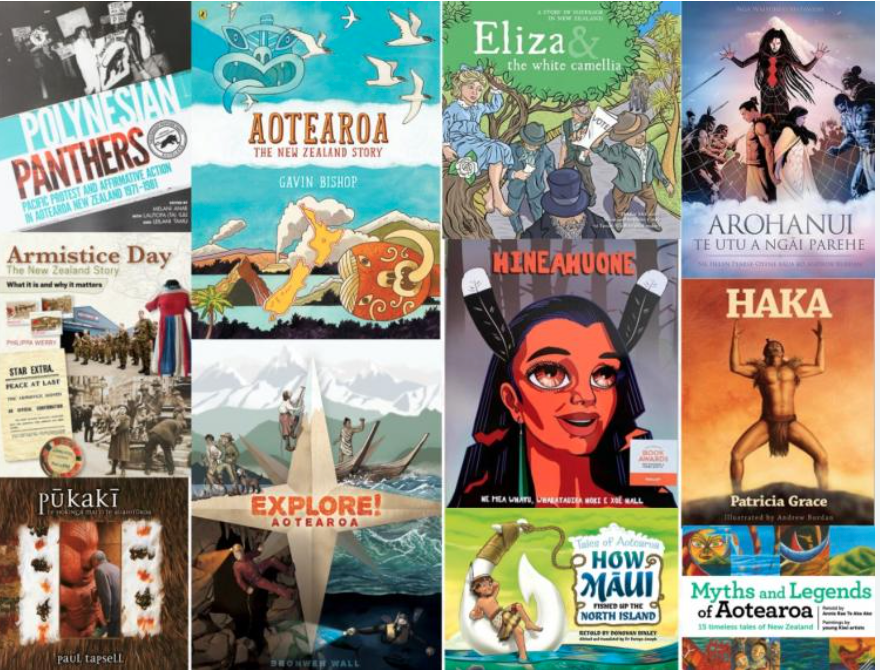
EXPLORE / TŪHURA learning intentions:
- We are EXPLORING Our Place and making connections
- We are EXPLORING and sharing our understanding of the significance of Waitangi Day and why it is celebrated in NZ.
- We are EXPLORING and sharing our understanding of the significance of Chinese New Year and why it is celebrated.
- We are EXPLORING ourselves, our school, MHJC and getting to know each other.

Chinese New Year 2023 is a Year of the Rabbit, more specifically, Water Rabbit, starting from January 22nd, 2023, and lasting until February 9th, 2024.
Recent/upcoming years of the Rabbit are 1951, 1963, 1975, 1987, 1999, 2011, 2023, and 2035. If you were born in one of the years, then you are a Rabbit.
The Year of the Rabbit 兔年 symbolizes longevity, positivity, auspiciousness, wittiness, cautiousness, cleverness, deftness and self-protection
About Waitangi Day....
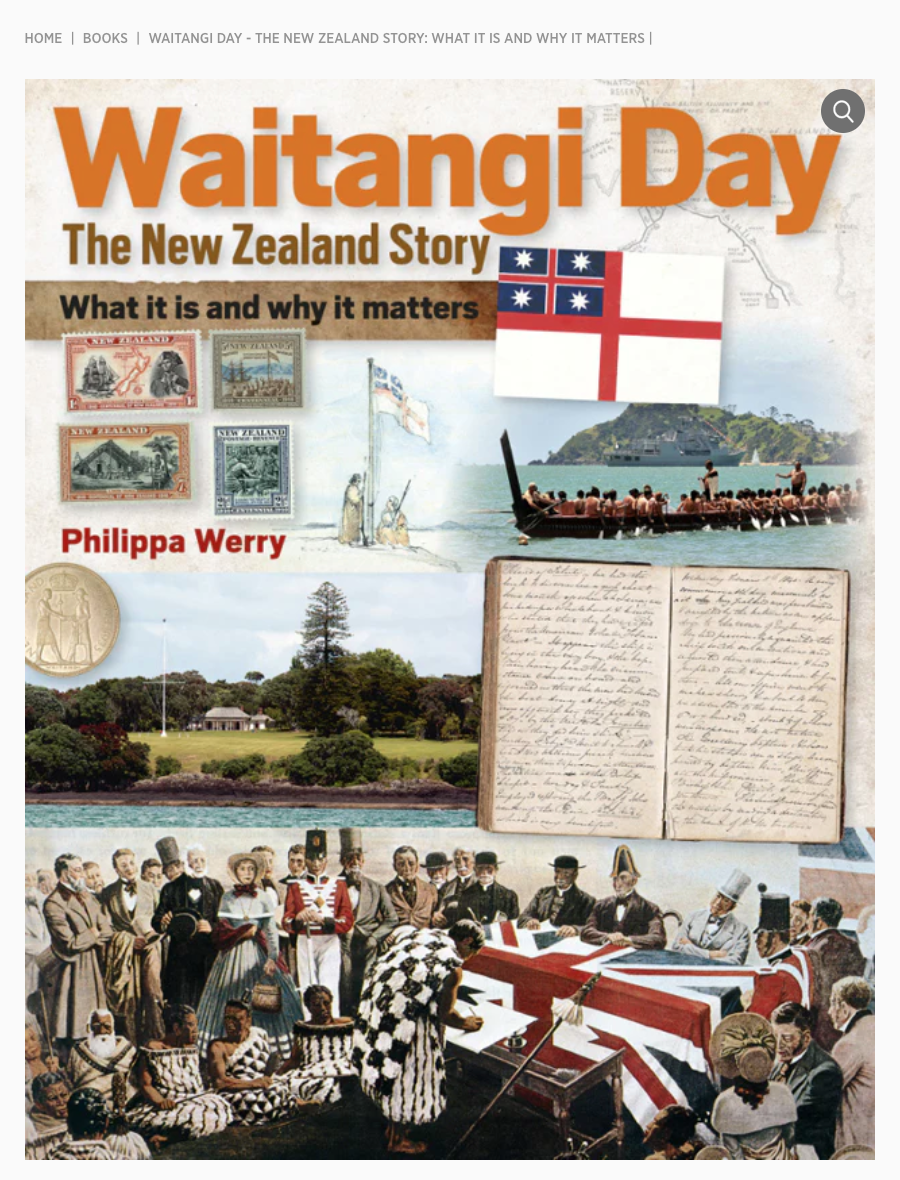


https://nzhistory.govt.nz/politics/treaty/waitangi-day
Please always refer to our 7C2 Google Classroom for more resources. MHOL and Google Classroom are the main resources used for teaching and learning at Mission Heights Junior College!
https://classroom.google.com/u/1/w/NTEyNTk1MzI5MjE1/t/all
I look forward to getting to know you all!
-
Kia ora 7C2,
I hope that you are all keeping safe!
Learning Intention:
We are learning to :
- understand what a cyclone is.
- gain a better understanding about the impact of Cyclone Gabrielle.
Success Criteria: I can/have
explain what a cyclone is.
share my experiences of Cyclone Gabrielle and discuss current events with regards to the cyclone.
There has been so much information about Tropical Cyclone Gabrielle and the heavy rain and wind warnings in place across North Island; and the rain hitting Northland, Auckland, Coromandel; Bay of Plenty, Waikato, Gisborne, Hawke’s Bay among regions facing impacts.
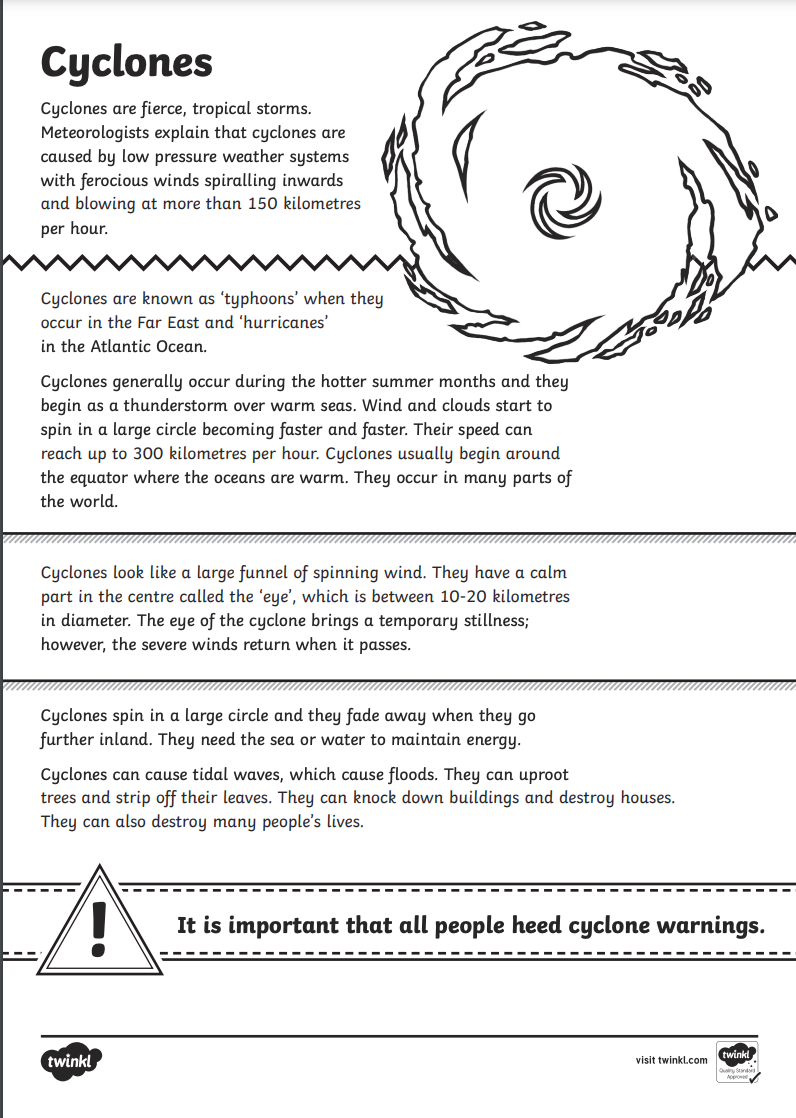
We will talk a bIt more about this when we get back to school.
For this week, I was hoping to spend more time getting to know you better.
We will be spending Monday and Tuesday completing the 2 Getting to know me activities on Google Classroom. The activities will be in our Global Studies folder. Please read and follow the instructions on Google Classroom.
Instructions for Activity 1 and Activity 2 are on Google Classroom.
Activity 1: Activity 2:
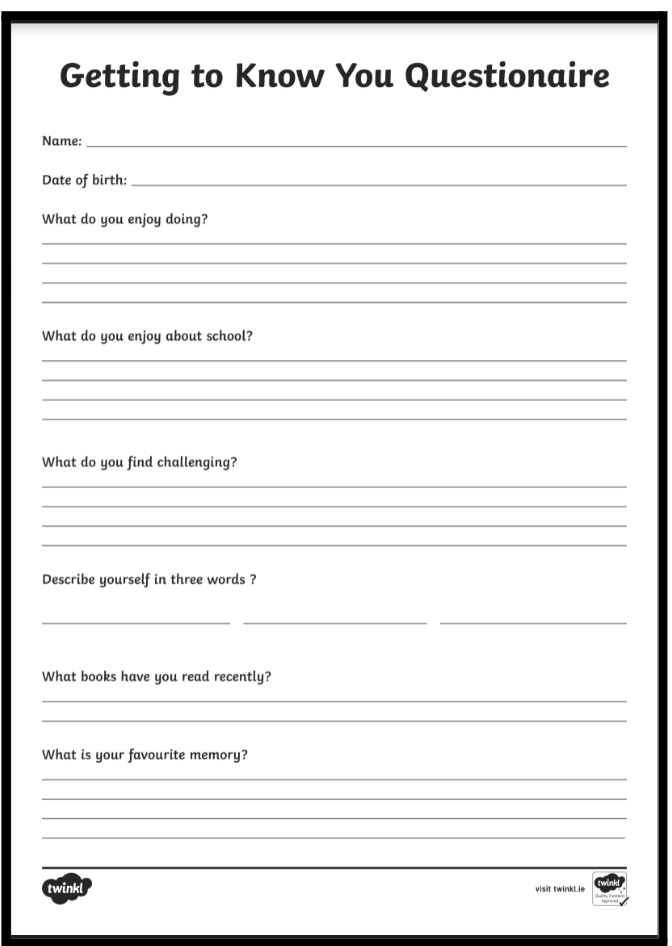
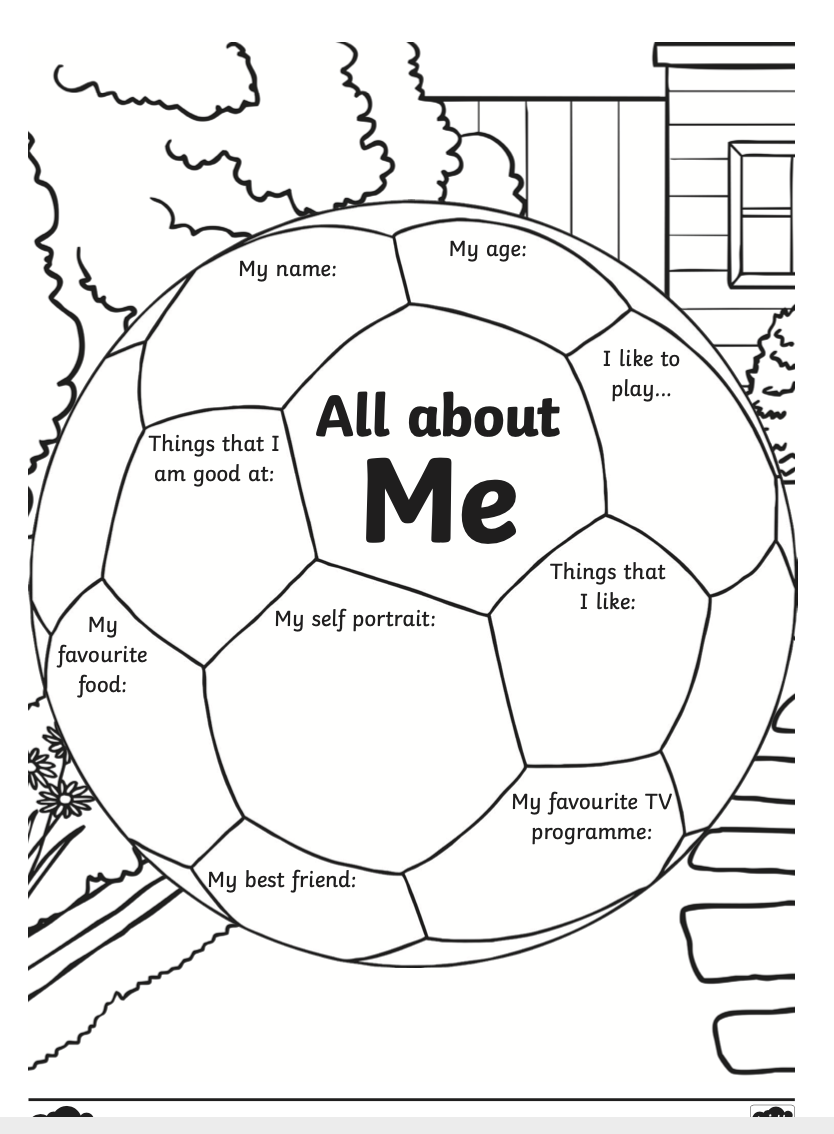
14/2 - Please complete the Chinese New Year activity in your Global Studies book.
Watch a Chinese New Year celebration videoQuestions and instructions can be found on our Google Classroom.
-
Kia ora 7C2,
EXPLORE / TŪHURA learning intentions:
- We are EXPLORING our country and making connections between the history of the arrival of colonists to Aotearoa
- We are EXPLORING and sharing our understanding of the significance of Waitangi Day and why it is celebrated in NZ.
- We are EXPLORING our new school, MHJC and getting to know each other.
Learning Intention:
We are learning to :
- have discussions about the Treaty of Waitangi.
- explain the importance of Waitangi Day.
Success Criteria: I can/have
explain the importance of the Treaty of Waitangi.
talk about the importance of celebrating Waitangi Day.
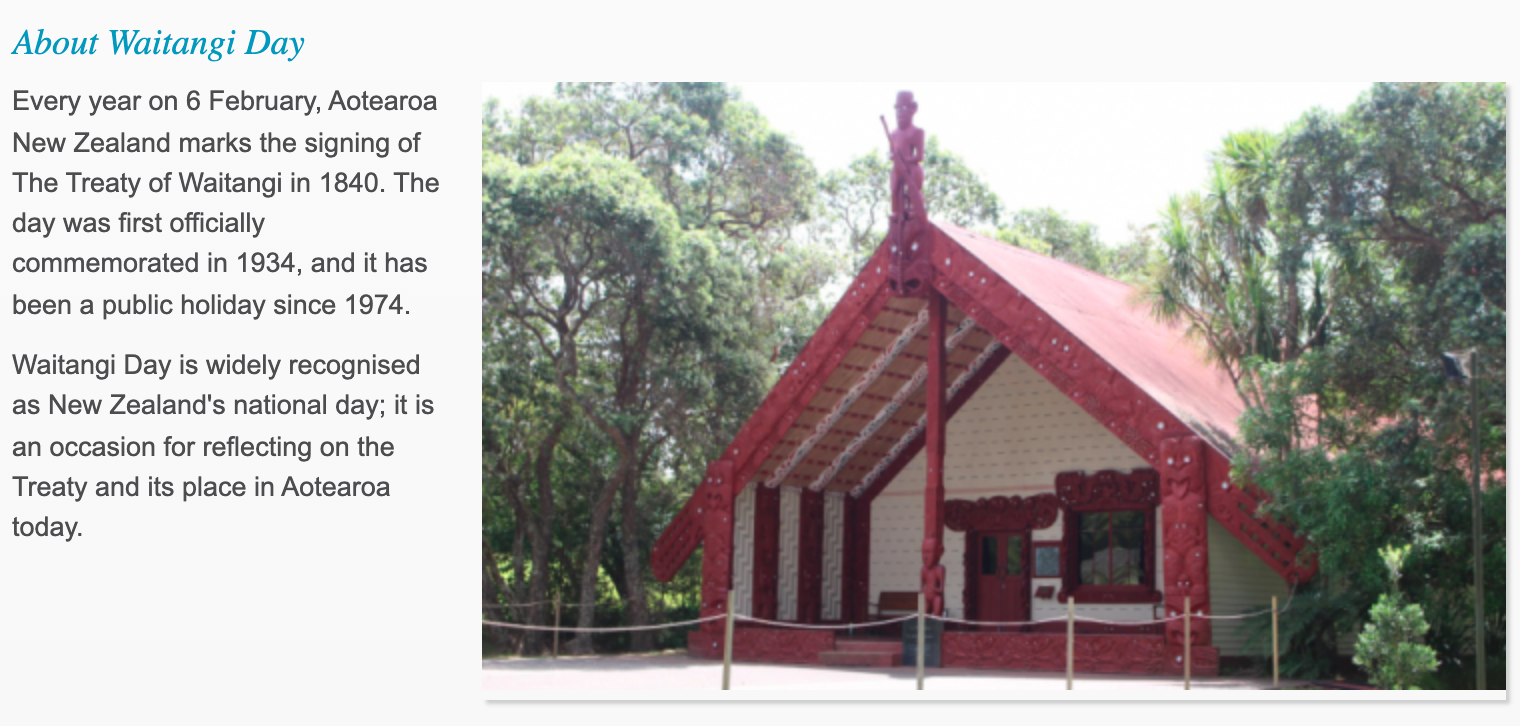
The Treaty of Waitangi activities will be completed and discussed next week as we used our session this week to watch.....
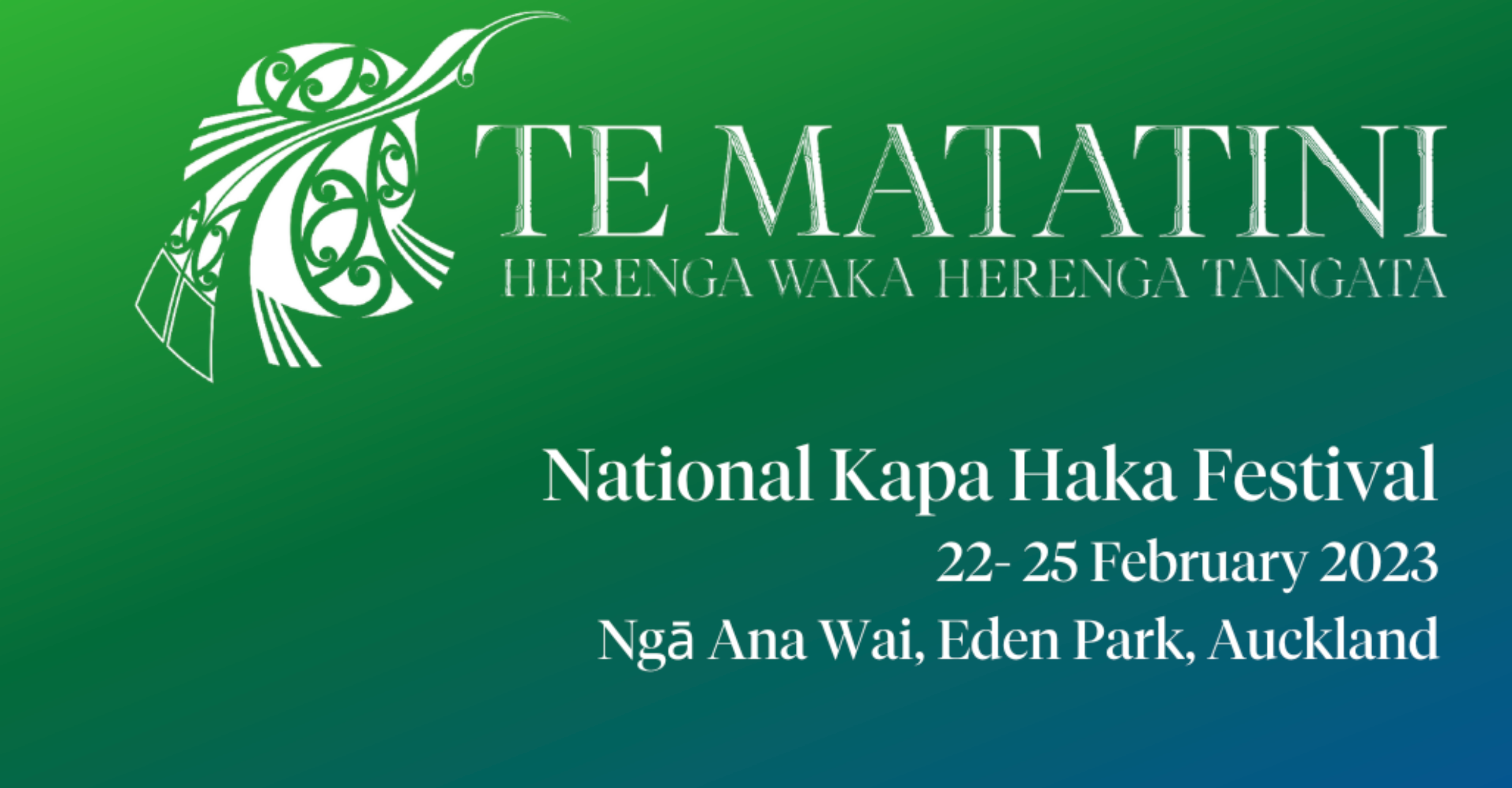

-
Kia ora 7C2,
Learning Intention:
We are learning about :
- the arrival of the voyagers in NZ.
- the importance of the History of New Zealand.
Success Criteria: I can/have
share my prior knowledge of the discovery of New Zealand.
How do we believe that Voyagers arrived in New Zealand?
Complete the following task in your book.
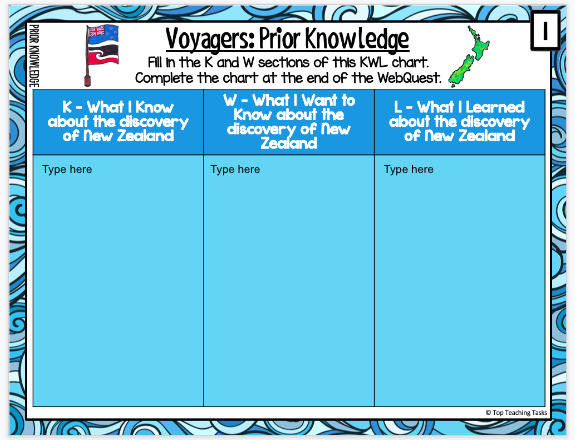
EXPLORE / TŪHURA learning intentions:
- We are EXPLORING our country and making connections between the history of the arrival of colonists to Aotearoa
- We are EXPLORING and sharing our understanding of the significance of Waitangi Day and why it is celebrated in NZ.
- We are EXPLORING our new school, MHJC and getting to know each other.
Who was Kupe?
Answer the following questions on the slide presentation in Google Classroom
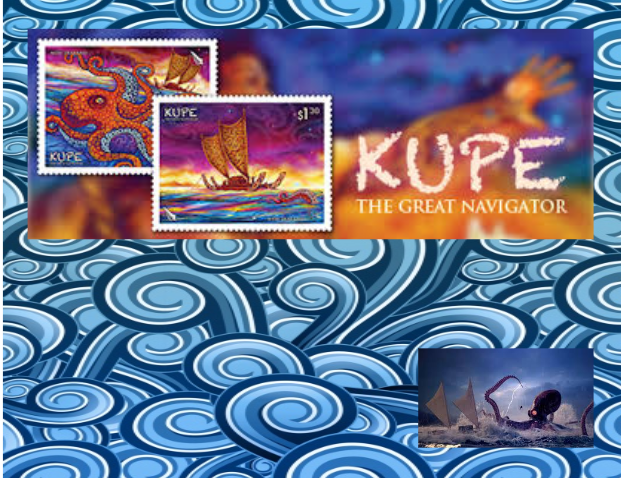
Look at the following information
The Fish of Māui video
Māui and the Giant Fish http://eng.mataurangamaori.tki.org.nz/Support-materials/Te-Reo-Maori/Maori-Myths-Legends-and-Contemporary-Stories/Maui-and-the-giant-fish
Māui Recites a Fishing Karakia https://teara.govt.nz/en/video/6799/maui-chants-a-fishing-karakia
The Legend of New Zealand https://www.newzealand.com/int/feature/the-legend-of-new-zealand/
-
Kia ora 7C2,
EXPLORE / TŪHURA learning intentions:
- We are EXPLORING our country and making connections between the history of the arrival of colonists to Aotearoa
- We are EXPLORING and sharing our understanding of the significance of Waitangi Day and why it is celebrated in NZ.
- We are EXPLORING our new school, MHJC and getting to know each other.
Learning Intention:
We are learning about :
- Kupe and his importance to New Zealand.
Success Criteria: I can/have
talk to my buddy and the class about Kupe and his arrival to New Zealand.
share the Maori legend about Kupe with my buddy.
Who was Kupe?
Answer the following questions on the slide presentation in Google Classroom


- According to legend, what brought Kupe to Aotearoa?
First People’s in Maori Tradition – Kupe
2. How did Kupe navigate his way to New Zealand?
3. How did New Zealand get the name Aotearoa?
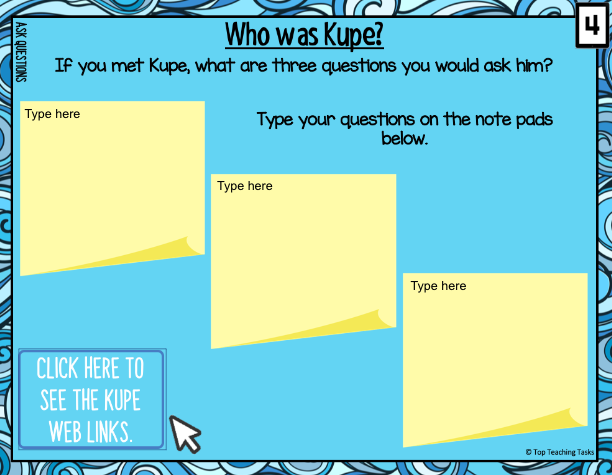
Ask your questions on the Google Slides doc in Google Classroom.

Use the prompts below to tell us what you know about Kupe as a person.
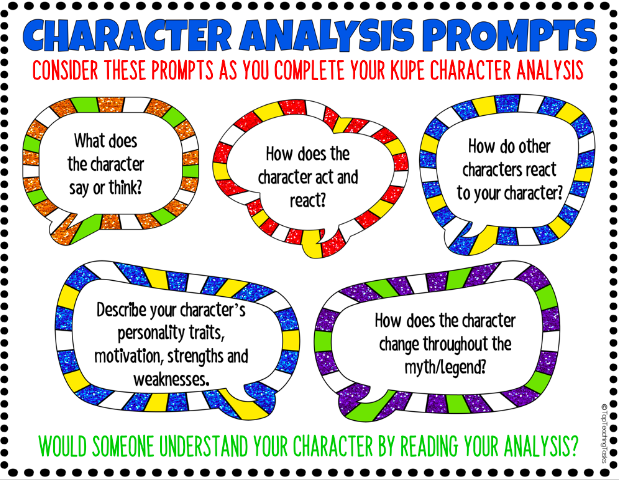
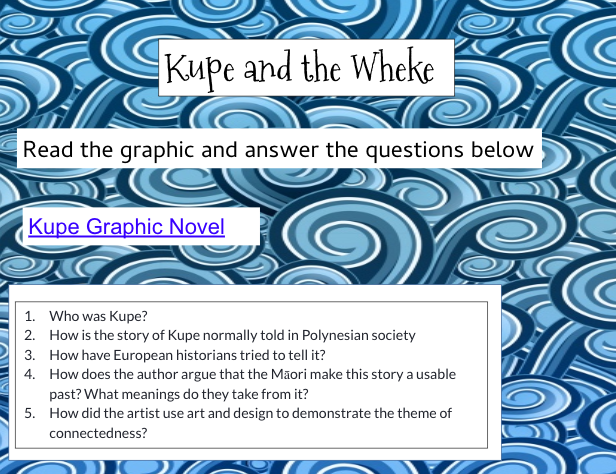
Graphic attached below
-
Kia ora 7C2,
Camp week - starting Wednesday - Friday!
Learning Intention:
We are learning about :
- how the Polynesian explorers navigated the Pacific Ocean.
Success Criteria: I can/have
explain how the Polynesian explorers navigated the Pacific Ocean.
EXPLORE / TŪHURA learning intentions:
- We are EXPLORING our country and making connections between the history of the arrival of colonists to Aotearoa
- We are EXPLORING and sharing our understanding of the significance of Waitangi Day and why it is celebrated in NZ.
- We are EXPLORING our new school, MHJC and getting to know each other.
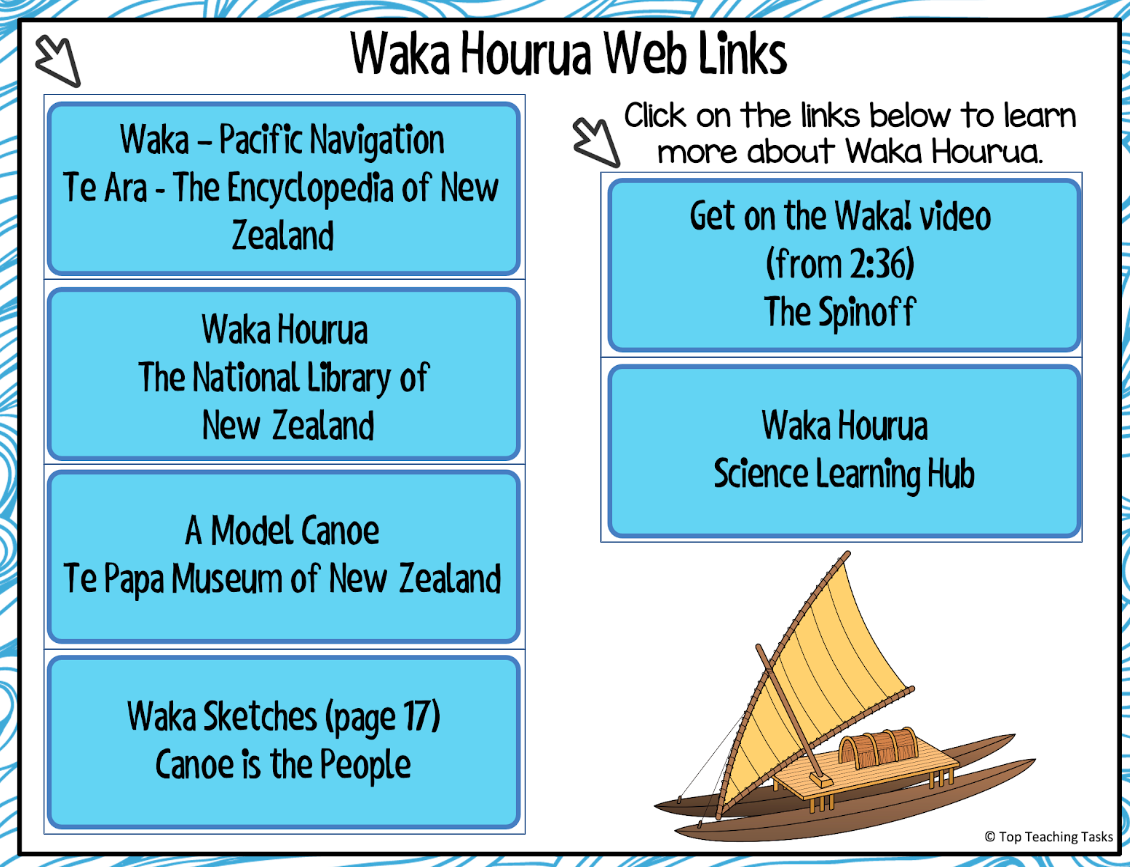

Organise information on Graphic organiser in Google Classroom
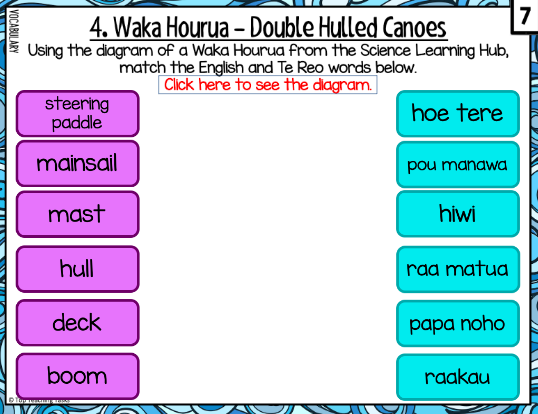

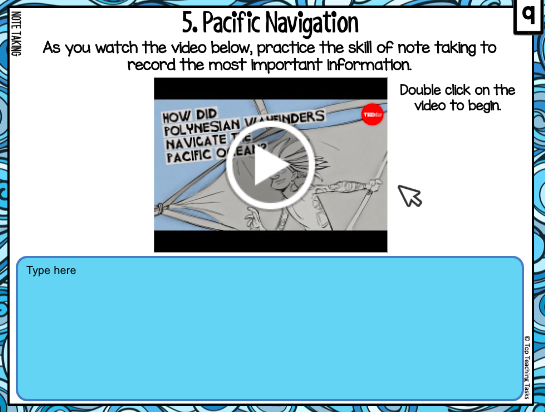

-
Morena 7C2,
A warm welcome back from camp! I hope that you all had an amazing time! I sure did!
Well done to anyone who challenged themselves during camp!
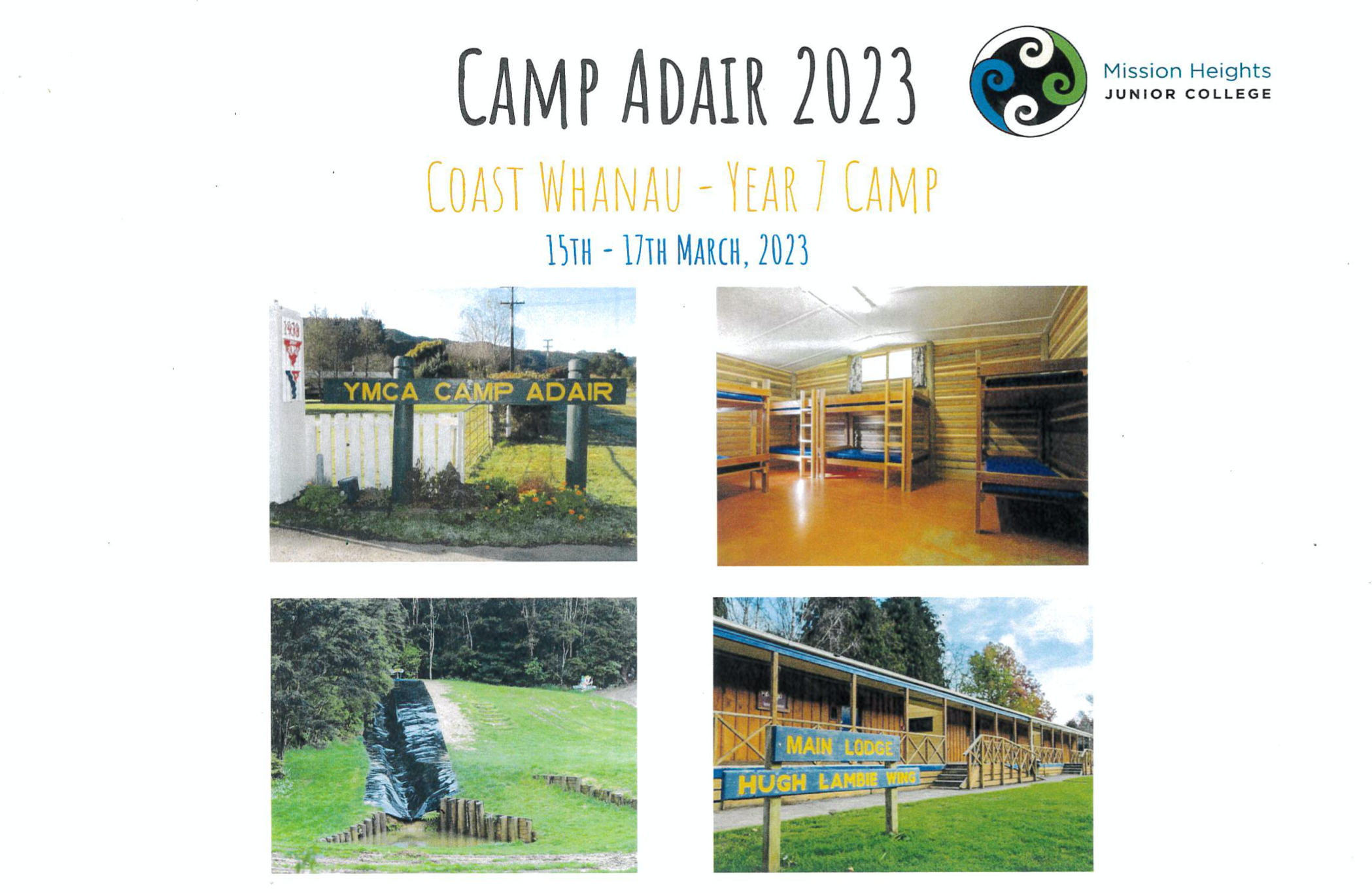
During this week you will be preparing yourself for your camp diary writing. The writing structure will be taught during your English class and the information gathering will be done during our Global Studies session this week.
Learning Intention:
We are learning about :
- how to gather information sequentially, to prepare us for our diary writing activity.
Success Criteria: I can/have
brainstorm ideas about camp with my activity group.
record my ideas sequentially in point form in my Global Studies book.
EXPLORE / TŪHURA learning intentions:
- We are EXPLORING and recalling our camp activities during the 3 days at camp.
- We are EXPLORING and sharing our camp experiences and highlights.
Kia ora 7C2,
EXPLORE / TŪHURA learning intentions:
- We are EXPLORING our country and making connections between the history of the arrival of colonists to Aotearoa
- We are EXPLORING and sharing our understanding of the significance of Waitangi Day and why it is celebrated in NZ.
- We are EXPLORING our new school, MHJC and getting to know each other.
Learning Intention:
We are learning about :
- navigation and how the voyagers came to New Zealand
Success Criteria: I can/have
explain the meaning of navigation and how the voyagers came to New Zealand

Traditional Polynesian navigation - also called non-instrument navigation or wayfinding - means finding your way without any of the tools modern navigators use. No GPS, no compass, no radio or satellite reports.
Wayfinding basics
Before the invention of the compass, sextant and clocks, or more recently, the Global Positioning System (GPS), Polynesians navigated their ocean voyages without instruments. Instead, clues about position, direction, and distance came from the stars, sun, and moon; from patterns in the ocean, including currents, ocean swells, and localized wave characteristics; from clouds, the wind, and even from wildlife. Navigators also kept a mental log of their progress, always maintaining a sense of the distance covered and the present location.
Downwind sailing
Most traditional navigators plan their routes using a technique known as downwind sailing. The strategy is to set a course to a point at a given latitude upwind of the target island. Then, when you reach the correct latitude, you turn and let the wind carry you to your destination.
Downwind sailing helps simplify the challenge of locating the target island. If you sail directly toward your target and somehow miss it, you may not know which way to turn. Was it to the left or right? But if you sail to a point to one side (that is, east or west) and upwind of your target, you can then turn downwind and trust that the island is in front of you.
Winds and currents
For a successful sailing voyage you need very good knowledge of wind patterns and ocean currents. A strong current can be friend or foe, helping to carry you where you want to go or rapidly carrying you off course. Winds and currents vary widely from place to place and from season to season, and storms often disrupt the typical patterns. A good navigator thinks carefully about the likely winds and currents at the time of a voyage.
More about winds, currents and latitudes here: http://www.exploratorium.edu/neverlost/#/navigation/basics/plan/winds
The star compass
Traditional Polynesian navigators position themselves mainly by the stars, using what's called a star compass. The ability to read the night sky is a great skill. A star compass is used to help memorise the rising and setting points of the brightest and most distinctive stars and planets to set direction.
Navigators steer their waka toward a star on the horizon. When that star rises too high in the sky or sets beneath the horizon, another is chosen, and so on through the night. Seven to 12 stars are enough for one night's navigation, and the moon and bright planets such as Kōpō (Venus) and Pareārau (Jupiter) are also useful.
Read more on the Te Aurere star compass: http://teaurere.org.nz/star_compass.htm |
http://teaurere.org.nz/star_positions.htm
Sun and moon
Of course, stars aren't visible all the time. That's when the sun and moon can help. At daybreak, navigators note the position of the waka in relation to the rising sun. As the sun gets higher in the sky, they look to where it will set in the evening. At night, if clouds or fog pass in front of your guiding stars, the moon may still be visible and a good bearing marker when it is near the horizon.
Ocean swells
When skies are too overcast for navigators to use the sun, the moon, planets or stars, ocean swells can fill in as a rough guide to direction. An experienced navigator can sense the direction swells are coming from as they pass under the waka. If you note the direction from which the swells are coming at a time when the stars are visible, those same swells can guide you when the stars disappear.
In the Pacific, prevailing north and south-easterly trade winds push up swells that remain constant for long periods. Navigators keep their waka at the same angle to these swells. Sudden changes in waka motion indicates that it has changed course.
But swell patterns can and do shift, so a navigator can't rely on them all the time. When all else fails, and there's no way to keep a correct bearing, a good navigator 'heaves to'; that is, takes down the sail and waits until he or she can set the course again.
Nearing land
Traditional navigators use a range of signs that show they are close to land before they can actually see it. Clouds hanging over high islands, reflections of lagoons in the sky, plants washed out into the ocean after a storm on land, wave refraction patterns (swells ‘bouncing’ off islands alters their patterns), and birds coming out to fish during the day and then returning to their home island are all signs used to detect land.
Exploring waka may have followed migrating birds, as told in Māori tradition. The long-tailed cuckoo comes to New Zealand from tropical Polynesia in October, and shearwaters would have been observed flying south in September. People would have known that land lay in that direction, but not how far away it was.
Modern Navigation
Modern navigation relies on technology such as GPS, radar and digital charts but having some knowledge of traditional methods of navigation can still be helpful.
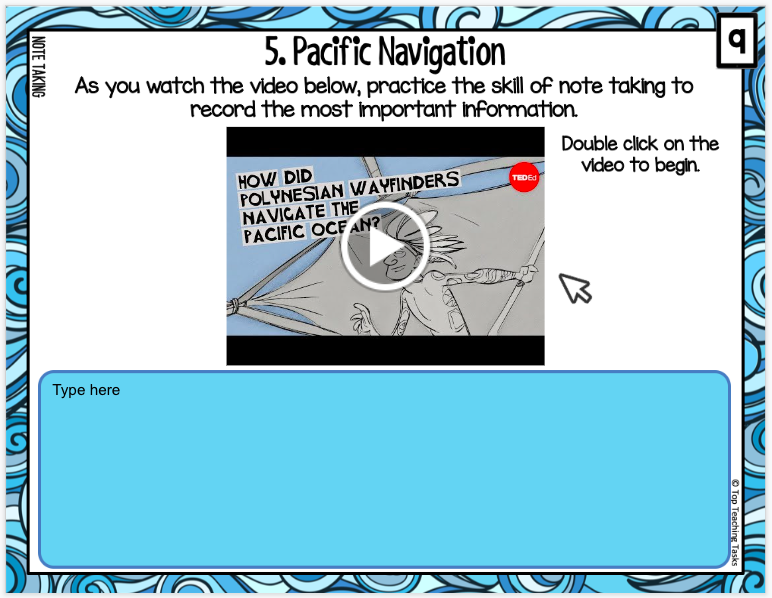
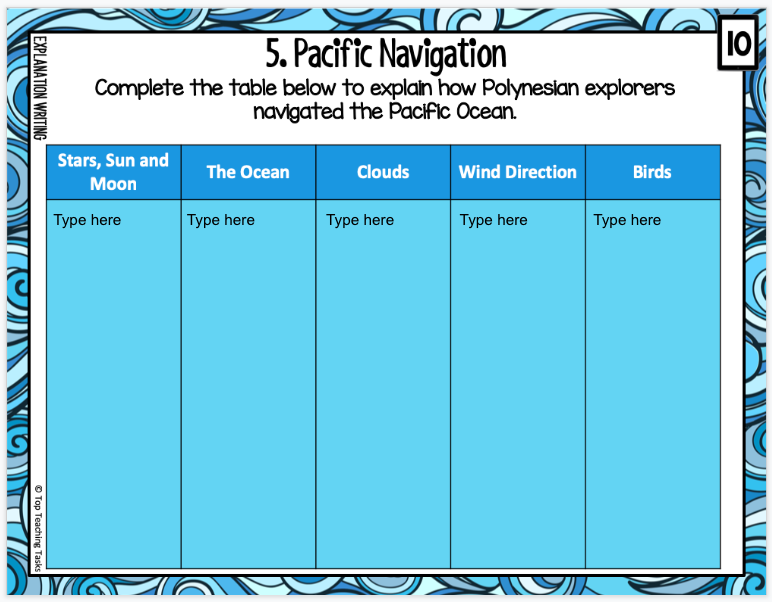
Pacific Navigation - National Library: https://natlib.govt.nz/schools/tuia-matauranga/voyaging-through-nz-histories/pacific-navigation
Pacific Navigation http://www.learnz.org.nz/location192/bg-standard-f/polynesian-navigation
The Secrets of the Navigators https://collections.tepapa.govt.nz/topic/2358
Star Compass - http://teaurere.org.nz/star_compass.htm -
Kia ora 7C2,
EXPLORE / TŪHURA learning intentions:
- We are EXPLORING our country and making connections between the history of the arrival of colonists to Aotearoa
Learning Intention:
We are learning about :
- Abel Tasman the main events in his life.
- Captain James Cook and some of the main events in his life.
Success Criteria: I can/have
- discuss the main events in Abel Tasman's life.
explain to my group who Captain James Cook is, and share at least 3 main events in his life.



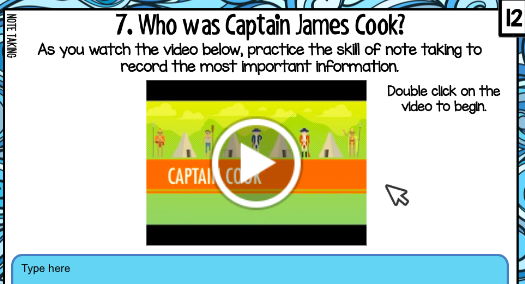

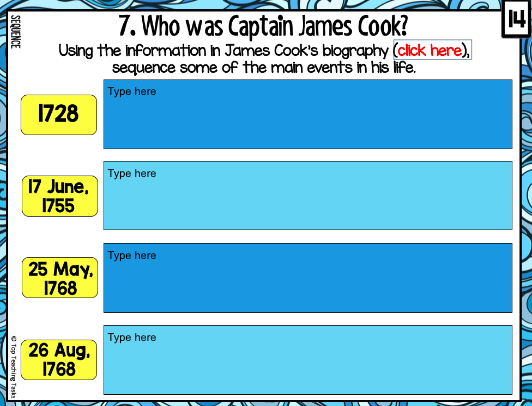


-
Kia ora 7C2,
EXPLORE / TŪHURA learning intentions:
Learning Intention:
We are learning about :
- Who Tupaia was about the Endeavour.
Success Criteria: I can/have
explain who Tupaia was and share information with my buddy about the Endeavour.
Tupaia



The Endeavour
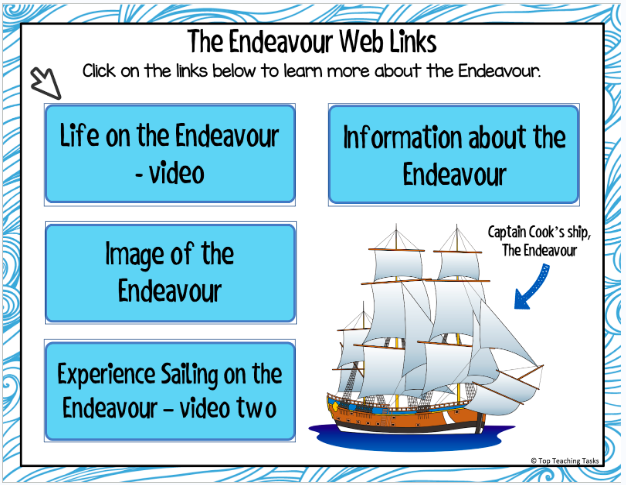
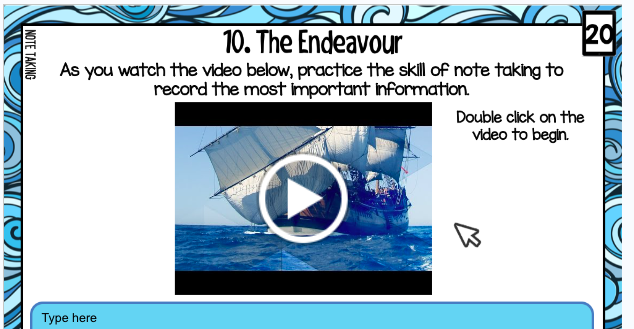
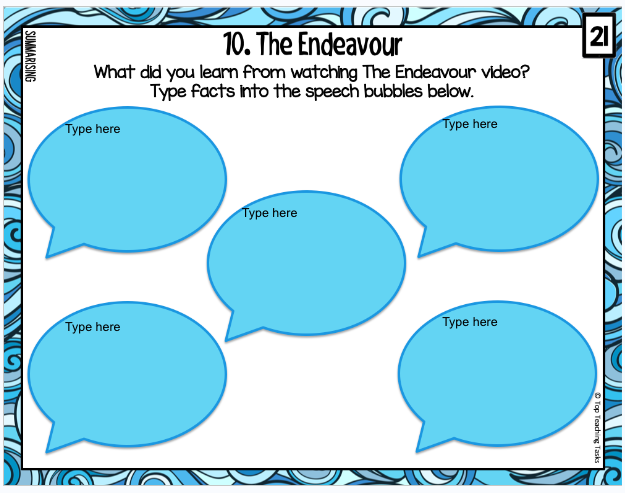
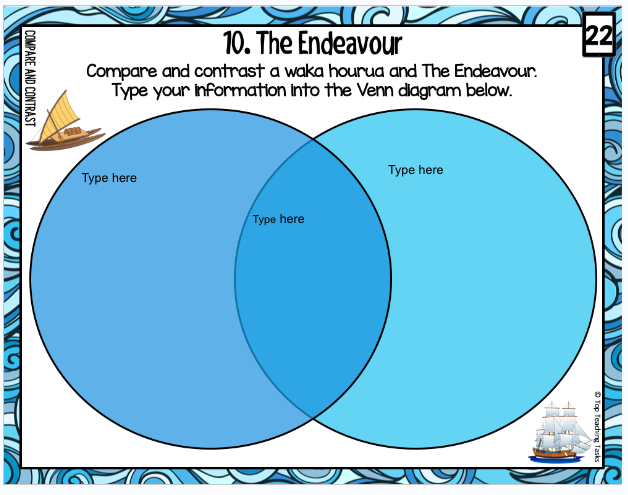
-
Kia ora 7C2,
Welcome to Term 2. I hope that you've all had a wonderful break!
A reminder to refer to Google Classroom every week, for resources and further instructions.
We are beginning this term with a focus on ANZAC Day. I will discuss this in more detail on Wednesday. There will be cross-curriculum between English and Global Studies with a combined assessment for Term 2!
We will also have a focus on our geography skills this term. So as of next week, Monday and Tuesday will focus on Global Studies content and Wednesday will be our skills development, starting with an introduction to mapping skills next week.
FOCUS / ARONGA learning intentions:
- We are FOCUSING on understanding how formal and informal groups make decisions that impact on communities.
- We are FOCUSING on understanding that events have causes and effects
- We are FOCUSING on understand how people participate individually and collectively in response to community challenges.
This First World War inquiry will develop our understanding of how New Zealand’s military heritage has influenced, and will continue to influence, the identity of New Zealand and how others perceive us. We will be looking at specific events of the First World War and relate these understandings to modern-day New Zealand and how we now respond in times of war and peace. This inquiry will provide us with an opportunity to explore the role of this country in war and how that role determines the way the rest of the world views New Zealand.
Learning Intention: We are learning about the ANZAC's and ANZAC Day.
Success Criteria: I am able to explain the importance of ANZAC Day and the ANZAC's.
LESSON ONE
1. Complete the questions on Who Were the ANZAC's in Google Classroom.
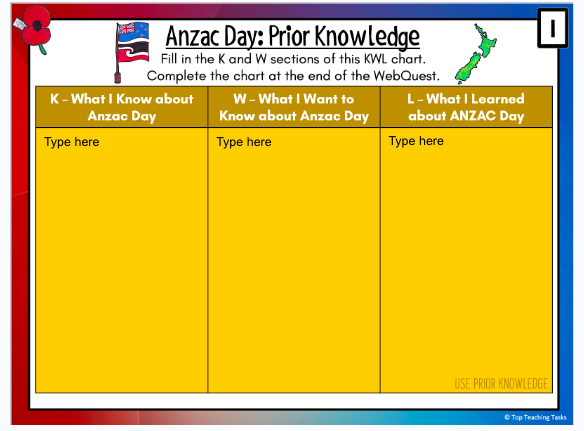
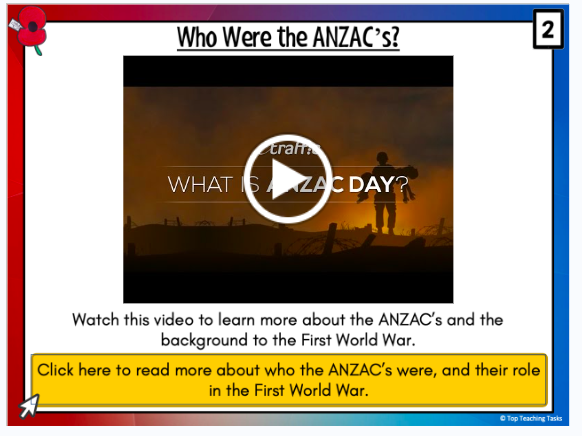
https://youtu.be/_7PRzZ_Z8xU
https://nzhistory.govt.nz/war/anzac-day/the-anzacs
2. Complete the Timeline and answer questions on The First World War in Google Classroom.


-
Kia ora 7C2,
On Wednesday we will be learning more about King Charles III and his coronation. (Resources on Googleclassroom)
Our geography skills begin this week.
FOCUS / ARONGA learning intentions:
- We are FOCUSING on understanding how formal and informal groups make decisions that impact on communities.
- We are FOCUSING on understanding that events have causes and effects
- We are FOCUSING on understand how people participate individually and collectively in response to community challenges.
Answer questions on The First Anzac Day on Google Classroom.
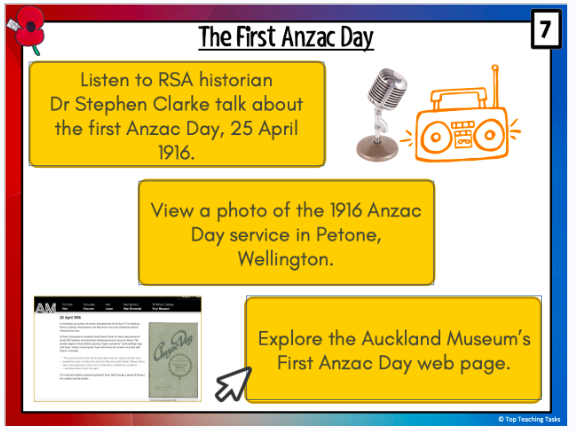
https://www.rnz.co.nz/national/programmes/anzacday/audio/2487491/the-first-anzac-day-1916
https://www.aucklandmuseum.com/discover/collections/topics/the-first-anzac-day
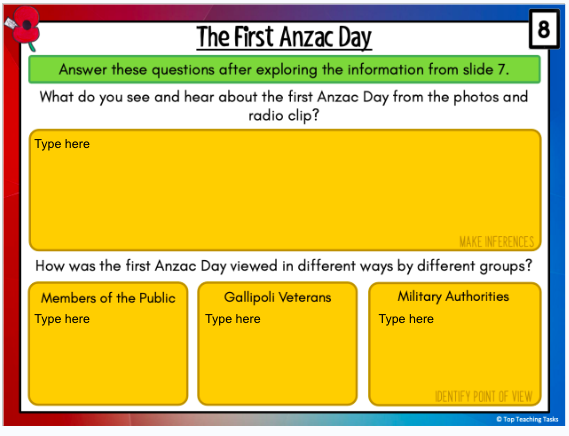

- We are Learning about King Charles III and his coronation.

-
Kia ora 7C2,
We have missed a session this week, due to the teachers strike.
Please finish off any incompleted work from last week.
Once you've completed last weeks work, please complete the activity below.


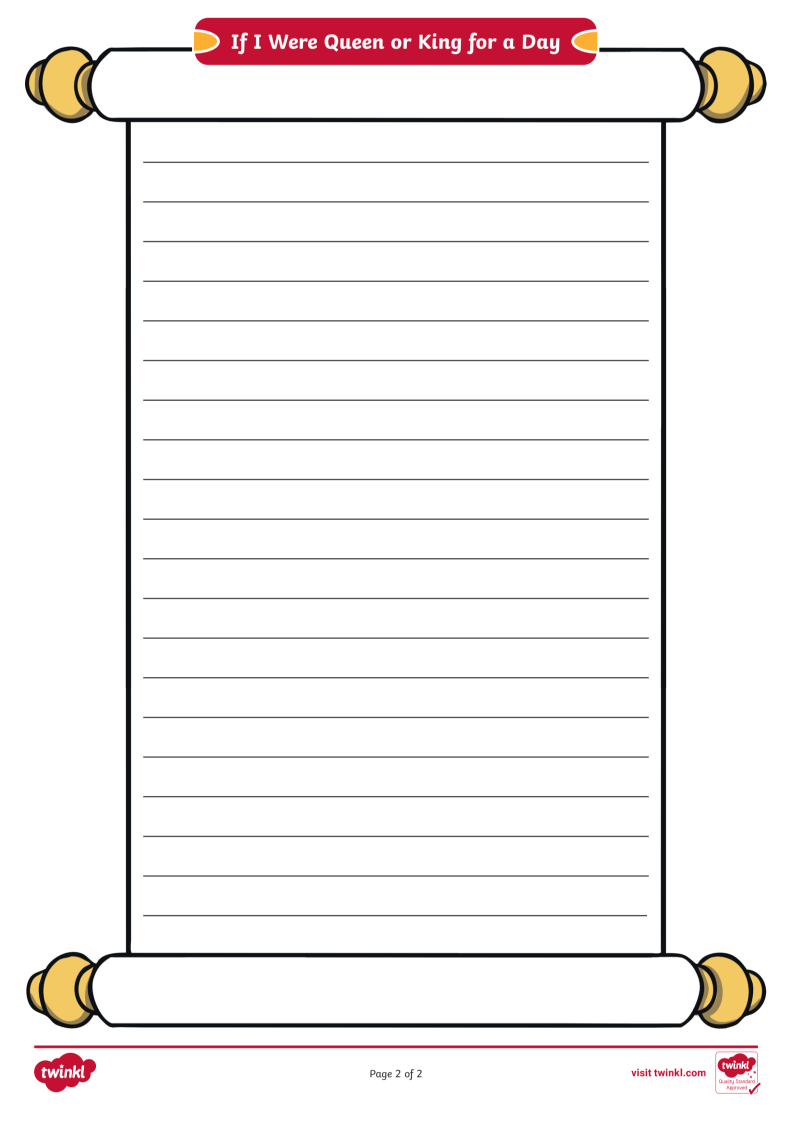
FOCUS / ARONGA learning intentions:
- We are FOCUSING on understanding how formal and informal groups make decisions that impact on communities.
- We are FOCUSING on understanding that events have causes and effects
- We are FOCUSING on understand how people participate individually and collectively in response to community challenges.
Answer questions on The First Anzac Day on Google Classroom.

https://www.rnz.co.nz/national/programmes/anzacday/audio/2487491/the-first-anzac-day-1916
https://www.aucklandmuseum.com/discover/collections/topics/the-first-anzac-day


-
Kia ora 7C2,

We will begin our session this week with a Pink Shirt activity to celebrate the start of Kindness Week!


Lesson 4 - NZ Identity and the First World War
EXPLORE / TŪHURA learning intentions:
- We are EXPLORING that events have causes and effects
- We are EXPLORING the people respond to challenges as individuals and in groups.
- We are EXPLORING the exploration of environments and events creates challenges and chances.
A reminder to refer to google Classroom for all resources.



-
Kia ora 7c2,
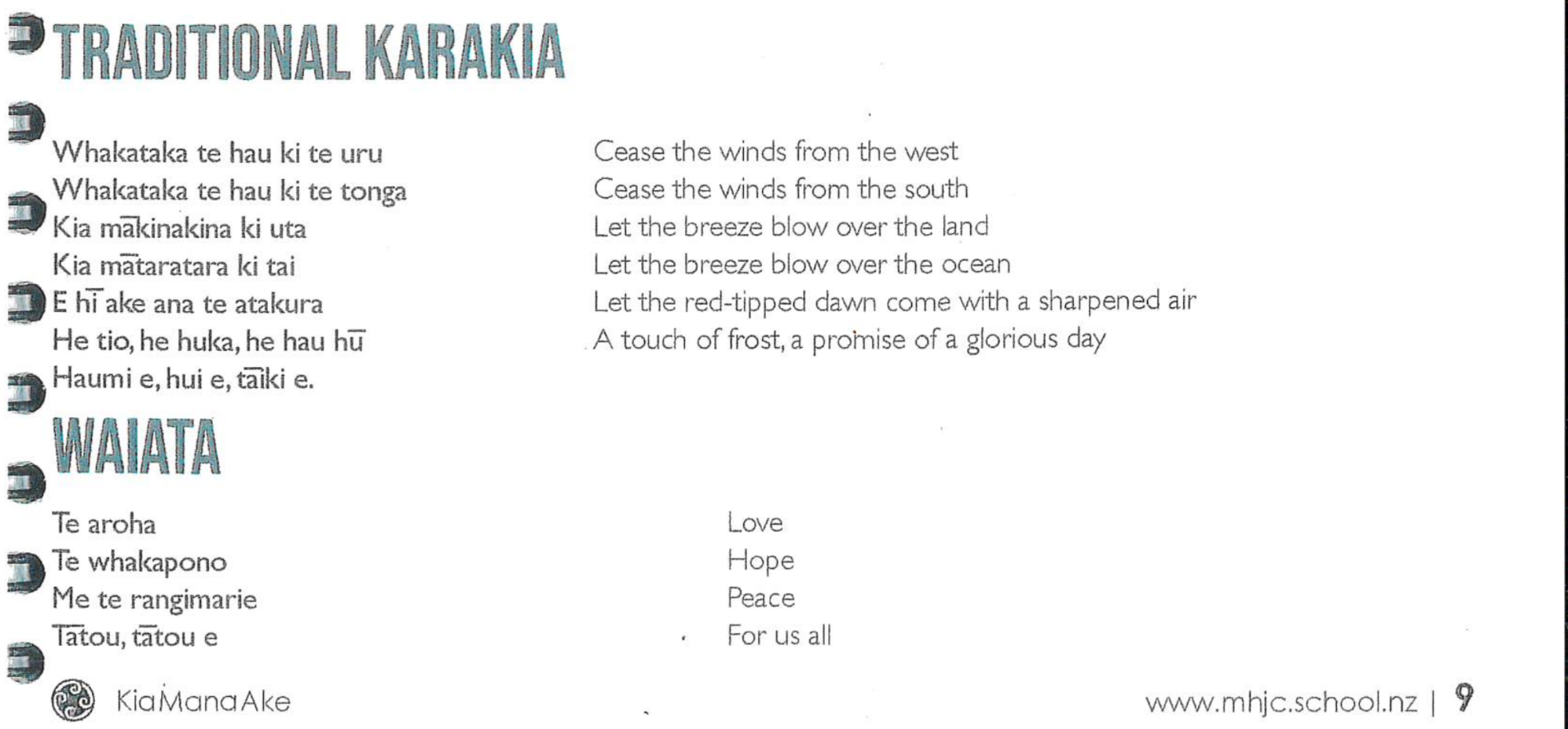
EXPLORE / TŪHURA learning intentions:
- We are EXPLORING that events have causes and effects
- We are EXPLORING the people respond to challenges as individuals and in groups.
- We are EXPLORING the exploration of environments and events creates challenges and chances.
Lesson 5:
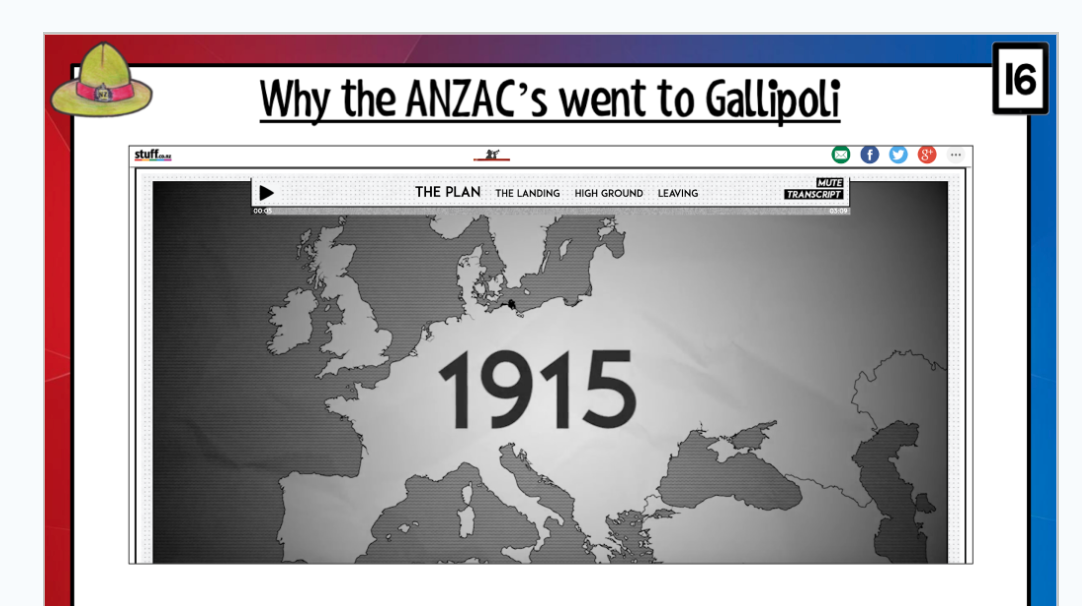
Landing at Gallipoli
- Find 20 images of Gallipoli the show the environment and landscape at the time of World War 1. Copy those images onto a Google Doc.
- Select 1 (one) photo) and write a paragraph to explain the challenges that the soldiers faced in this environment.
- Submit Google Doc onto Google Classroom assignment.
A reminder that all resources can be found on Googleclassroom.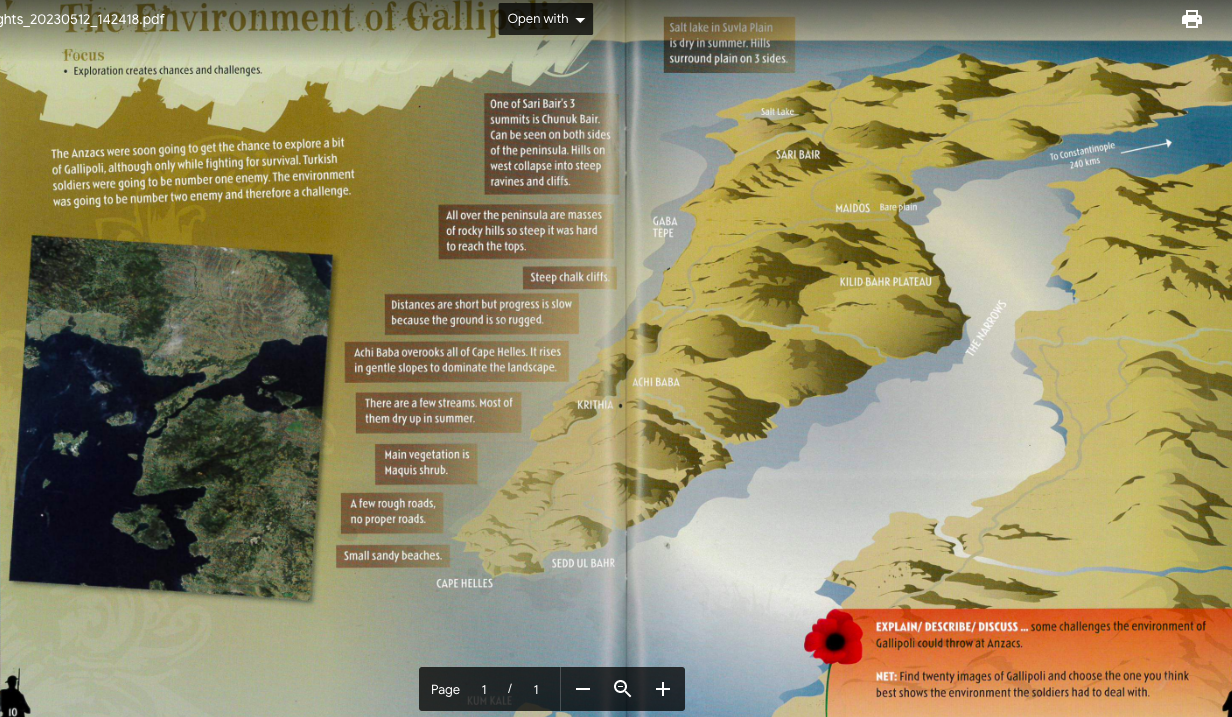
-
Kia ora 7c2,

EXPLORE / TŪHURA learning intentions:
- We are EXPLORING that events have causes and effects
- We are EXPLORING the people respond to challenges as individuals and in groups.
- We are EXPLORING the exploration of environments and events creates challenges and chances.
Combined English and Global Studies Assessment:
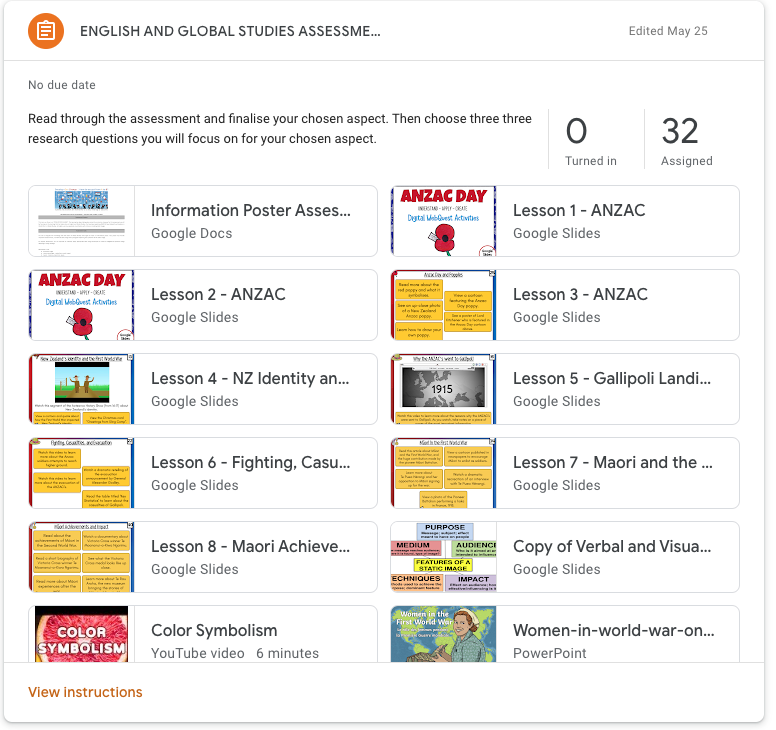
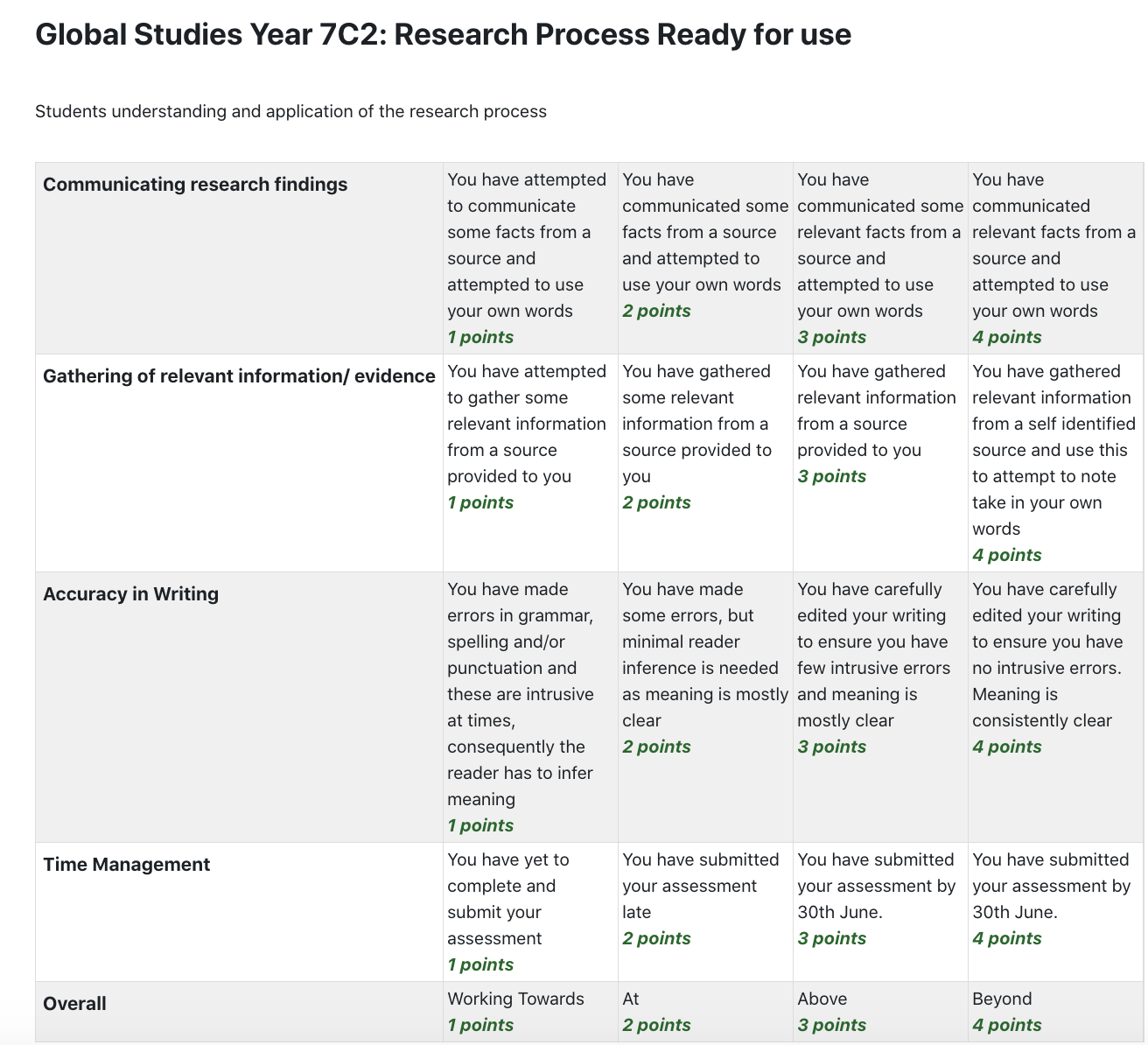
Lesson 6: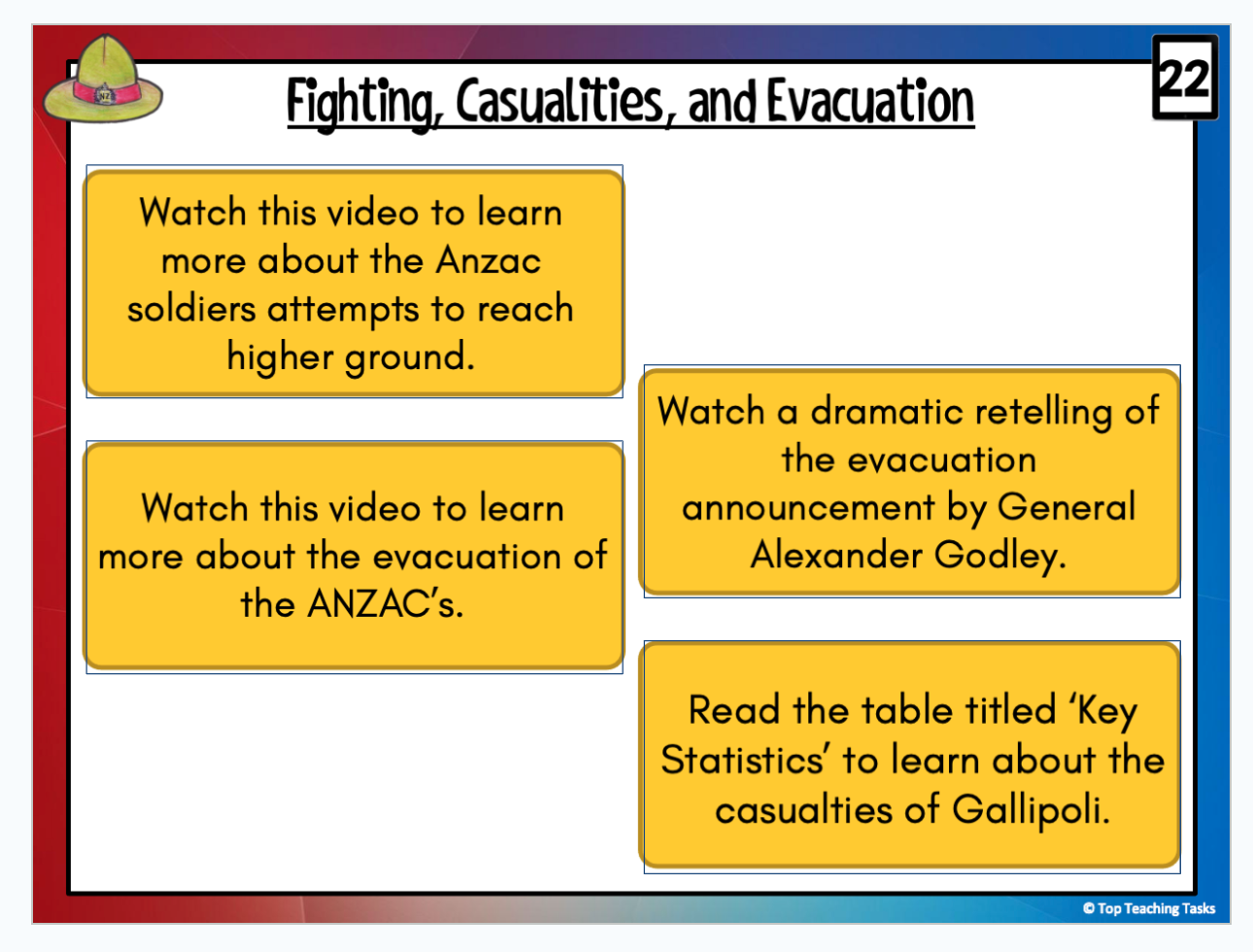
A reminder that all resources are on Google Classroom. -
Kia ora 7C2,
We have only 1 session this week.
Monday - King's birthday-No school.
Tuesday - Session 1 - e-asTTle test
Wednesday - Class time to work on your assessment.

EXPLORE / TŪHURA learning intentions:
- We are EXPLORING that events have causes and effects
- We are EXPLORING the people respond to challenges as individuals and in groups.
- We are EXPLORING the exploration of environments and events creates challenges and chances.
Combined English and Global Studies Assessment:

INFORMATION POSTER ASSESSMENT - ENGLISH AND GLOBAL STUDIES
Setting and Context
This term our focus is on “DEVELOP-DO-CHANGE” This learning has been taking place across the curriculum, however for this assessment we will be focusing on the learning that has taken place in English and Global Studies. You have been exploring ANZAC & New Zealand’s participation in World War 1 in Global Studies. In English, you have explored visual literacy with a focus on creating static images.
Assessment task:
You are to integrate the knowledge and skills learnt in Global Studies and English to create an information poster. Your poster must include important research facts, a contextual static image and a paragraph explaining the symbolism of this static image.
For English assessment, you are required to creatively apply appropriate static image techniques to create an original and powerful image depicting a strong message.
Remember to use:dominant image
colour psychology – symbolism, mood, impact
layout – balance, proportion, space,
framing lettering – upper/lower case, font style, size
texture – materials, look, feel and decoration
symbolism – the implied (hidden) meaning to represent an important idea
For Global Studies assessment, you are required to show your understanding of one aspect of ANZAC & New Zealand’s participation in World War 1.
Assessment Requirements:
Research Task: You will present your research in the form of an A3 poster using the static image knowledge to clearly highlight the chosen aspect of World War 1 and New Zealand’s involvement.
You could select:
ANZAC Day and Poppies (including the First ANZAC day)
Women in the First World War
New Zealand Identity and the First World War
Landing at Gallipoli
Fighting, Casualties and Evacuation
In Flanders Fields
Maori in the First World War and their achievements.
Suggested questions to research: (Choose 3 to answer)
Research the roles people held during your event or aspect of World War 1.
Discuss what life was like for the soldiers / nurses / families.
Describe the different sacrifices men and women made during World War 1.
Describe possible experiences and thoughts of soldiers taking part in World War One and the challenges they faced.
Find out about how New Zealand soldiers found life in Egypt.
Discuss the impact of going to war for the soldiers / nurses / families during World War One.
Discuss some challenges New Zealand Soldiers with being deployed in World War One.
Research trenches for your aspect of World War One and how the soldiers were involved in them.
Describe the uniforms worn in your aspect and the reasons for having them or any changes that were made during World War One.
Explain how the environment helped or combat disease at the time.
Explain how experiences of Maori in the Native Contingent differed from that of Maori in other infantry units.
Describe how the environment of Gallipoli and the technology of the time, made warfare different to that of today.
Explain how the weather affected the campaign for Gallipoli and other battles around the area.
A3 Static Image/ Poster: Your poster should reflect the aspect that you researched. Please ensure that you have used a combination of symbols, images and text.
Paragraph Writing: You will select one (1) important feature of your poster to explain the aspect that you researched and understanding of your chosen topic. Feel free to use a paragraph writing structure that you are confident with (PEEL, SEXY, TEXAS)
Assessment will take place in class and you may work on this at home. You are allowed peer feedback and you must check in with your teacher as you make progress towards your final piece. Your work must be in an A3 paper based submission.
Achievement Objectives Level 4:
English
uses an increasing understanding of the connections between oral, written, and visual language when creating texts.
constructs texts that show an awareness of purpose and audience through deliberate choice of content, language, and text form
uses a range of oral, written, and visual features to create meaning and effect and to sustain interest
Global Studies
People respond to community challenges or government actions, sometimes acting individually and sometimes organising themselves collectively

-
Kia ora 7c2,
Please continue to work on you assessment task for today (Wednesday).
Early finishers please upload a scanned copy of your work on Google Classroom.
Once you have uploaded a copy of your assessment please complete your tasks on Education Perfect.
I have created more tasks.

EXPLORE / TŪHURA learning intentions:
- We are EXPLORING that events have causes and effects
- We are EXPLORING the people respond to challenges as individuals and in groups.
- We are EXPLORING the exploration of environments and events creates challenges and chances.
Combined English and Global Studies Assessment:

INFORMATION POSTER ASSESSMENT - ENGLISH AND GLOBAL STUDIES
Setting and Context
This term our focus is on “DEVELOP-DO-CHANGE” This learning has been taking place across the curriculum, however for this assessment we will be focusing on the learning that has taken place in English and Global Studies. You have been exploring ANZAC & New Zealand’s participation in World War 1 in Global Studies. In English, you have explored visual literacy with a focus on creating static images.
Assessment task:
You are to integrate the knowledge and skills learnt in Global Studies and English to create an information poster. Your poster must include important research facts, a contextual static image and a paragraph explaining the symbolism of this static image.
For English assessment, you are required to creatively apply appropriate static image techniques to create an original and powerful image depicting a strong message.
Remember to use:dominant image
colour psychology – symbolism, mood, impact
layout – balance, proportion, space,
framing lettering – upper/lower case, font style, size
texture – materials, look, feel and decoration
symbolism – the implied (hidden) meaning to represent an important idea
For Global Studies assessment, you are required to show your understanding of one aspect of ANZAC & New Zealand’s participation in World War 1.
Assessment Requirements:
Research Task: You will present your research in the form of an A3 poster using the static image knowledge to clearly highlight the chosen aspect of World War 1 and New Zealand’s involvement.
You could select:
ANZAC Day and Poppies (including the First ANZAC day)
Women in the First World War
New Zealand Identity and the First World War
Landing at Gallipoli
Fighting, Casualties and Evacuation
In Flanders Fields
Maori in the First World War and their achievements.
Suggested questions to research: (Choose 3 to answer)
Research the roles people held during your event or aspect of World War 1.
Discuss what life was like for the soldiers / nurses / families.
Describe the different sacrifices men and women made during World War 1.
Describe possible experiences and thoughts of soldiers taking part in World War One and the challenges they faced.
Find out about how New Zealand soldiers found life in Egypt.
Discuss the impact of going to war for the soldiers / nurses / families during World War One.
Discuss some challenges New Zealand Soldiers with being deployed in World War One.
Research trenches for your aspect of World War One and how the soldiers were involved in them.
Describe the uniforms worn in your aspect and the reasons for having them or any changes that were made during World War One.
Explain how the environment helped or combat disease at the time.
Explain how experiences of Maori in the Native Contingent differed from that of Maori in other infantry units.
Describe how the environment of Gallipoli and the technology of the time, made warfare different to that of today.
Explain how the weather affected the campaign for Gallipoli and other battles around the area.
A3 Static Image/ Poster: Your poster should reflect the aspect that you researched. Please ensure that you have used a combination of symbols, images and text.
Paragraph Writing: You will select one (1) important feature of your poster to explain the aspect that you researched and understanding of your chosen topic. Feel free to use a paragraph writing structure that you are confident with (PEEL, SEXY, TEXAS)
Assessment will take place in class and you may work on this at home. You are allowed peer feedback and you must check in with your teacher as you make progress towards your final piece. Your work must be in an A3 paper based submission.
Achievement Objectives Level 4:
English
uses an increasing understanding of the connections between oral, written, and visual language when creating texts.
constructs texts that show an awareness of purpose and audience through deliberate choice of content, language, and text form
uses a range of oral, written, and visual features to create meaning and effect and to sustain interest
Global Studies
People respond to community challenges or government actions, sometimes acting individually and sometimes organising themselves collectively

-
Kia ora 7C2,
Please read and complete the Matariki activities highlighted below, in your Global Studies books.
You have our sessions on Monday and Tuesday to complete the activities.
We will begin your assessment presentations on Wednesday.
Please ensure that your assessment is scanned and uploaded on Google Classroom by the end of our session on Tuesday. I will be checking all submissions on Tuesday afternoon.
Any submissions after Tuesday will be graded as late.

Our focus for this week is MATARIKI. Please refer to our Google Classroom for resources.
Please copy the following vocabulary into your Global Studies books.
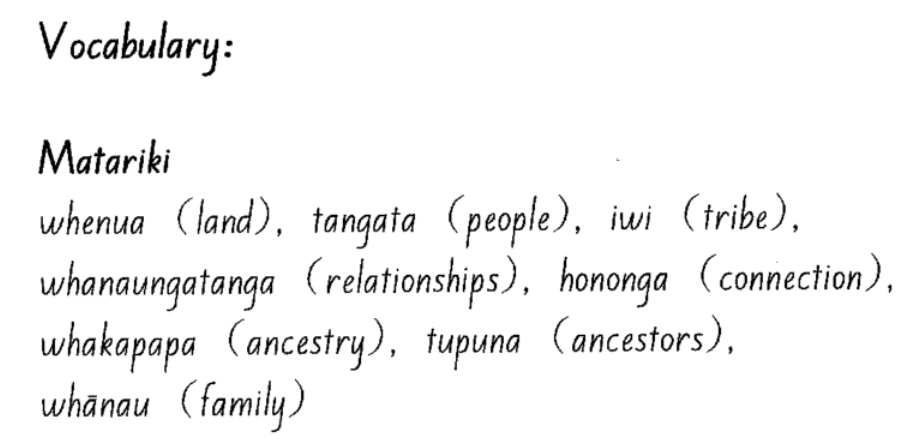
What is Matariki?
Matariki is one of the most important Māori celebrations. It signifies the start of the New Year in Māori culture.
Matariki is the name for a star cluster also known as the Pleiades, that rises in late June or early July. It literally translates in English to the 'eyes of god' or 'little eyes'.
Usind the Matariki Handbook attached below, write down 5 facts in your book about Matariki ?
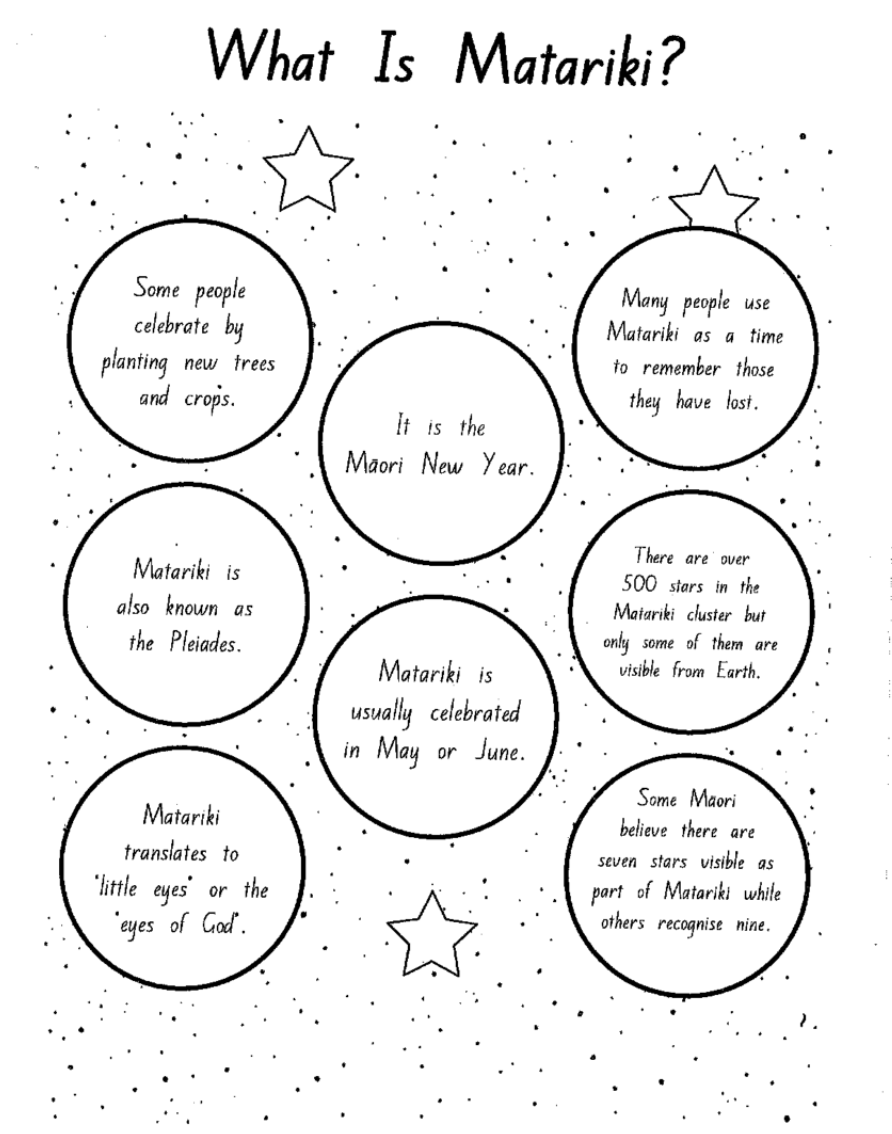
When is Matariki?
In 2023 Matariki will be celebrated on the 14 July.
How is Matariki celebrated?
Traditionally, Māori believed if the Matariki stars were very bright in the sky, this signified a warmer season and more fruitful crops for harvest.
It was seen as an ideal time for ceremonial offerings to the Māori land-based gods Rongo, Uenuku and Whiro to ensure their crops were healthy for the coming year. Matariki was also seen as an important time for family to gather and reflect on the past and the future.
Today Matariki celebrates the unique place in which we live and gives respect to the land we live on. This is celebrated through education and remembering whakapapa (ancestry).
The planting of new trees and crops is done to represent new beginnings.
Celebrations traditionally last up to 3 days after the new moon has risen following the Matariki clusters visibility in the sky.
What are the Matariki stars called?
Matariki is a star cluster, not a constellation. The 9 Matariki stars are called:
- Hiwa-i-te-rangi
- Matariki
- Pohutukawa
- Tupu-a-nuku
- Tupu-a-rangi
- Ururangi
- Waipuna-a-rangi
- Waiti
- Waita
Please complete the following activity in your Global Studies book:


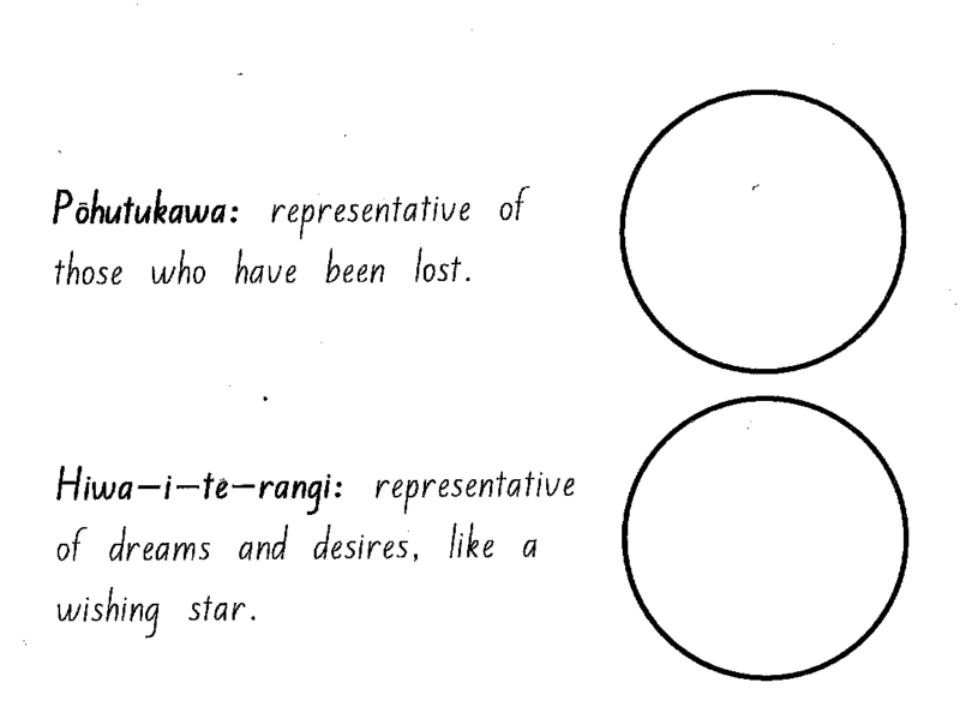
Watch the video below to learn more about Matariki.
Please refer to our Google Classroom for additional resources.
7C2 Google ClassroomEarly finishers : Matariki Reading Activity on Google Classroom
-
Kia ora 7C2,
Thank you to everyone who had uploaded your assessment. Any assessments not uploaded by the start of session 4 today, will be graded as late.

Today will be optional oral presentations, before I start grading your static images. You can choose to present your work orally, if you would like to clarify any part of your static image.
Continuation/discussion of Matariki activities.

Our focus for this week is MATARIKI. Please refer to our Google Classroom for resources.
Please copy the following vocabulary into your Global Studies books.

What is Matariki?
Matariki is one of the most important Māori celebrations. It signifies the start of the New Year in Māori culture.
Matariki is the name for a star cluster also known as the Pleiades, that rises in late June or early July. It literally translates in English to the 'eyes of god' or 'little eyes'.
Usind the Matariki Handbook attached below, write down 5 facts in your book about Matariki ?

When is Matariki?
In 2023 Matariki will be celebrated on the 14 July.
How is Matariki celebrated?
Traditionally, Māori believed if the Matariki stars were very bright in the sky, this signified a warmer season and more fruitful crops for harvest.
It was seen as an ideal time for ceremonial offerings to the Māori land-based gods Rongo, Uenuku and Whiro to ensure their crops were healthy for the coming year. Matariki was also seen as an important time for family to gather and reflect on the past and the future.
Today Matariki celebrates the unique place in which we live and gives respect to the land we live on. This is celebrated through education and remembering whakapapa (ancestry).
The planting of new trees and crops is done to represent new beginnings.
Celebrations traditionally last up to 3 days after the new moon has risen following the Matariki clusters visibility in the sky.
What are the Matariki stars called?
Matariki is a star cluster, not a constellation. The 9 Matariki stars are called:
- Hiwa-i-te-rangi
- Matariki
- Pohutukawa
- Tupu-a-nuku
- Tupu-a-rangi
- Ururangi
- Waipuna-a-rangi
- Waiti
- Waita
Please complete the following activity in your Global Studies book:

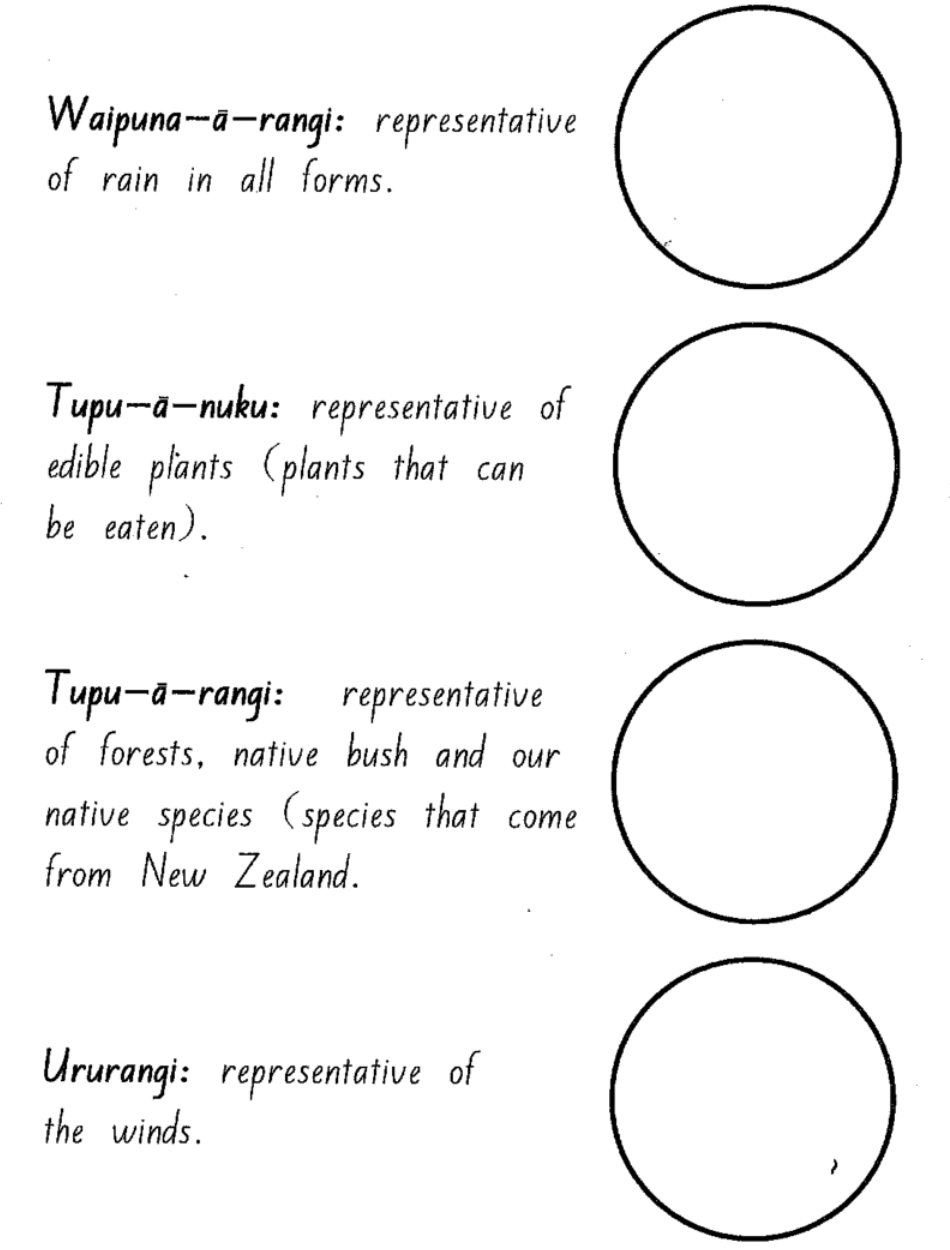

Watch the video below to learn more about Matariki.
Please refer to our Google Classroom for additional resources.
7C2 Google ClassroomEarly finishers : Matariki Reading Activity on Google Classroom
-

Kia ora 7C2,
Welcome to Term 3! I hope that you had an awesome break!
This week we will be recapping our work on Matariki. Thank you to those of you who handed in your books at the end of last term. I noticed that a few of you still need to complete your Matariki work from last term. Please do this during our session on Monday.
Please complete the following activity, from last term, in your Global Studies book.
Early finishers please complete the Matariki consolidation activities below.

 Matariki
Matariki
Consolidating our knowledge and celebration...
Matariki Reading Comprehension Activity
-
Kia ora 7C2,
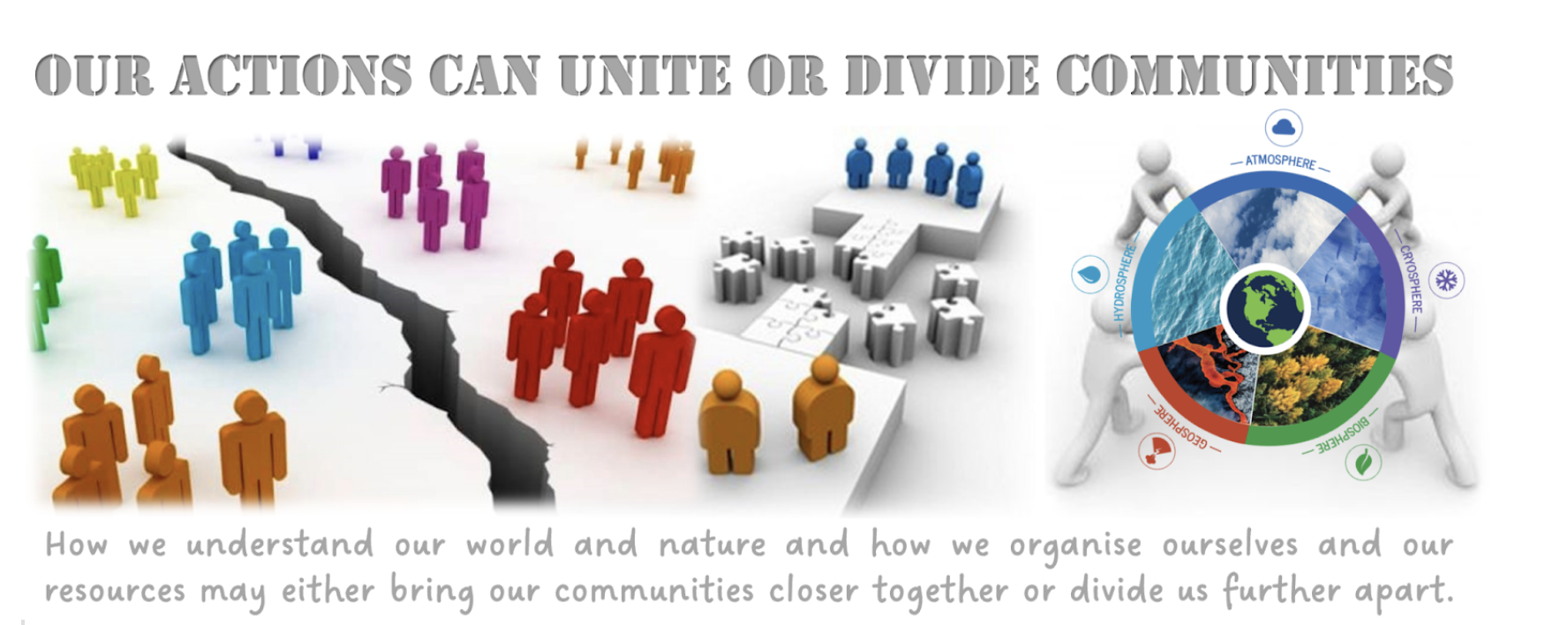
EXPLORE / TŪHURA learning intentions:
- We are EXPLORING and investigating to understand whakapapa and tūrangawaewae.

Learning Intentions:
Whakapapa and tūrangawaewae are at the heart of Māori culture. Understanding whakapapa and tūrangawaewae involves learning the unique stories that contribute to our sense of belonging and help us to become who we are. People, land, countries, teams and clubs all have stories about origins, place, significant events and names.
Learning intentions for this experience are:
Investigate and understand whakapapa and tūrangawaewae.
Review or extend mihi and share stories with each other.
Kōrero | Discussion:
Watch
What is whakapapa?
What is tūrangawaewae?
Outer world and inner world
In the concept of tūrangawaewae, the external world reflects an inner sense of security and foundation. The mountains, rivers and waterways to which one can claim a relationship also express this internal sense of foundation.
Why is whakapapa central to Māori culture? Why is it important to everyone including tauiwi?
What is your story of belonging? Consider place, time, whānau, and actions.
How can you share your story and learn from other stories?
Watch: or
What is kawa, tikanga and ritenga?
Are there people in your class with whānau members who played for the same club or played the same sport as you or people in your whānau?
Brainstorm the kawa and tikanga you practise with your whānau, iwi, class, and community. For example, at birthday celebrations, shared meals, Matariki and other events.
Watch and
How are whanaungatanga and kaitiakitanga expressed and experienced within your whānau, iwi, class, community, and clubs?
Use Te aka | Maori dictionary to define kupu which are new to you.
Whakapapa shapes
(Set for Homework)
Develop your mihi. You could include your:
Whānau, iwi, community, origins, culture, rohe, country, club, and school, skills, talents, health and fitness, sport, interests, and interesting facts.
Is further research required? Do you need to ask your whānau, kaiako or others?
Write keywords, or draw images that summarise statements about being and belonging on each panel
Share stories and ask questions.
Discover something the same and different about another person.
Create a display of panels and footballs.
-
Kia ora 7C2,


Outer world and inner world
In the concept of tūrangawaewae, the external world reflects an inner sense of security and foundation. The mountains, rivers and waterways to which one can claim a relationship also express this internal sense of foundation.
Why is whakapapa central to Māori culture? Why is it important to everyone including tauiwi?
What is your story of belonging? Consider place, time, whānau, and actions.
How can you share your story and learn from other stories?
Watch: or
What is kawa, tikanga and ritenga?
Are there people in your class with whānau members who played for the same club or played the same sport as you or people in your whānau?
Brainstorm the kawa and tikanga you practise with your whānau, iwi, class, and community. For example, at birthday celebrations, shared meals, Matariki and other events.
Watch and
How are whanaungatanga and kaitiakitanga expressed and experienced within your whānau, iwi, class, community, and clubs?
Use Te aka | Maori dictionary to define kupu which are new to you.
Monday :
Develop your mihi. You could include your:
Whānau, iwi, community, origins, culture, rohe, country, club, and school, skills, talents, health and fitness, sport, interests, and interesting facts.
Is further research required? Do you need to ask your whānau, kaiako or others?
Write keywords, or draw images that summarise statements about being and belonging on each panel
Share stories and ask questions.
Discover something the same and different about another person.
Create a display of panels and footballs.
Whakapapa shapes
Complete the weekly quiz.
Tuesday/Wednesday:
- Watch Theme: Whanaungatanga and Kaitiakitanga.
- How are whanaungatanga and kaitiakitanga expressed and experienced within your whānau, iwi, class, community, and clubs?
- Research the meaning of tūrangawaewae.
- Discuss a definition that is meaningful for you.
- Where is your tūrangawaewae? Do you have more than one tūrangawaewae? It could be iwi whenua, an ancestral home, somewhere you feel a sense of belonging and connection, or a safe place to speak.
- Create a mindmap, slide deck or recording that includes the following ideas and information about your tūrangawaewae:
- Pūrākau | stories about what happened or why it’s your significant place.
- History of people and events connected to the place.
- Who contributes to your tūrangawaewae (people and animals).
- Describe or draw the environment, including features like trees, rivers, the coastline, buildings, estuaries, paths or roads.
- Is the environment suffering or thriving (healthy or unhealthy)? Explain problems and identify some solutions.
- What can you and your class, community, iwi, or club do to contribute to the kaitiakitanga of your tūrangawaewae?
- How can you promote kaitiakitanga practices in your rohe (area)?
- Kawa: protocol.
- Metaphor: a word or phrase that is used to give meaning to something else.
- Tikanga: protocols and ceremonies.
- Whakapapa: origin.
- Tūrangawaewae: a place to stand.
MHJC opened in 2009 on a site that had been bought from Sir William Manchester who is acknowledged in the Meeting Place next to the library.
Originally the land belonged to Ngai Tai ki Tamaki and we are fortunate to have strong links with the iwi and our whakapapa is acknowledged through the school haka. We are fortunate to have a modern buildings and equipment as well as a link with the past by acting as custodians of Tāne forest next to the college.
Our vision is to “grow greatness through innovative, constantly evolving personalised learning”
We value:
Pono/integrity which relates to how we manage ourselves – we encourage students to be reliable, responsible and trustworthy;
Awhinatanga/compassion or how we relate to others – we encourage students to be kind, compassionate and celebrate our unique cultural identities;
Whakamana/empowerment through learning – which includes prioritising how we learn using the Great Ako learning model, being digitally capable and responsible, and developing creativity and problem solving skills.
Our mission
At Mission Heights Junior College we recognise that every child is a valued and valuable individual and that within each child is a unique “grain of greatness” which it is our mission to grow.
A feature of our school is our intent to present learning in engaging, relevant and authentic contexts. We are keen to involve the community and real community issues in school life. Our school has also been designed and constructed to an “environmentally sustainable design” and caring for our environment is a key aspect of our school culture.- Share 3 interesting facts about MHJC that you have written in your books.
- Take notes and share 3 interesting facts about Sir William Manchester
-
Kia ora 7C2,

This week we will be looking at our context with relation to the Women's FIFA World Cup.
https://www.fifa.com/tournaments/womens/womensworldcupEXPLORE / TŪHURA learning intentions:
- We are EXPLORING and researching to understand how hosting the FIFA Women's World Cup can impact our Aotearoa New Zealand Economy.
- We are EXPLORING our rights and responsibilities as citizens of Aotearoa New Zealand through football.
- We are EXPLORING our understanding of the different countries that Aotearoa New Zealand are hosting and how our actions can divide or unite communities.
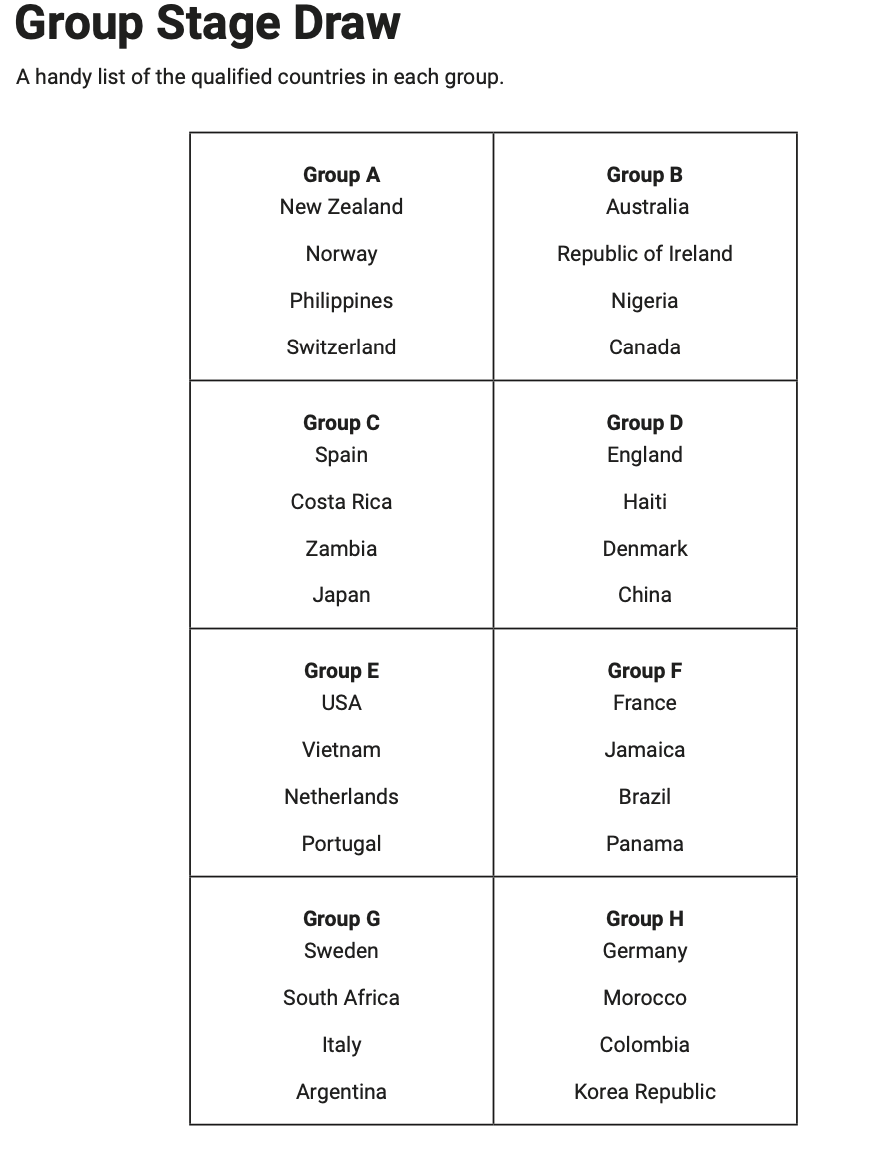
Based on you class roll number, this week each student will be researching information on a country participating in the Women's FIFA World Cup. This can be presented as a digital booklet, powerpoint or in any digital form that you choose.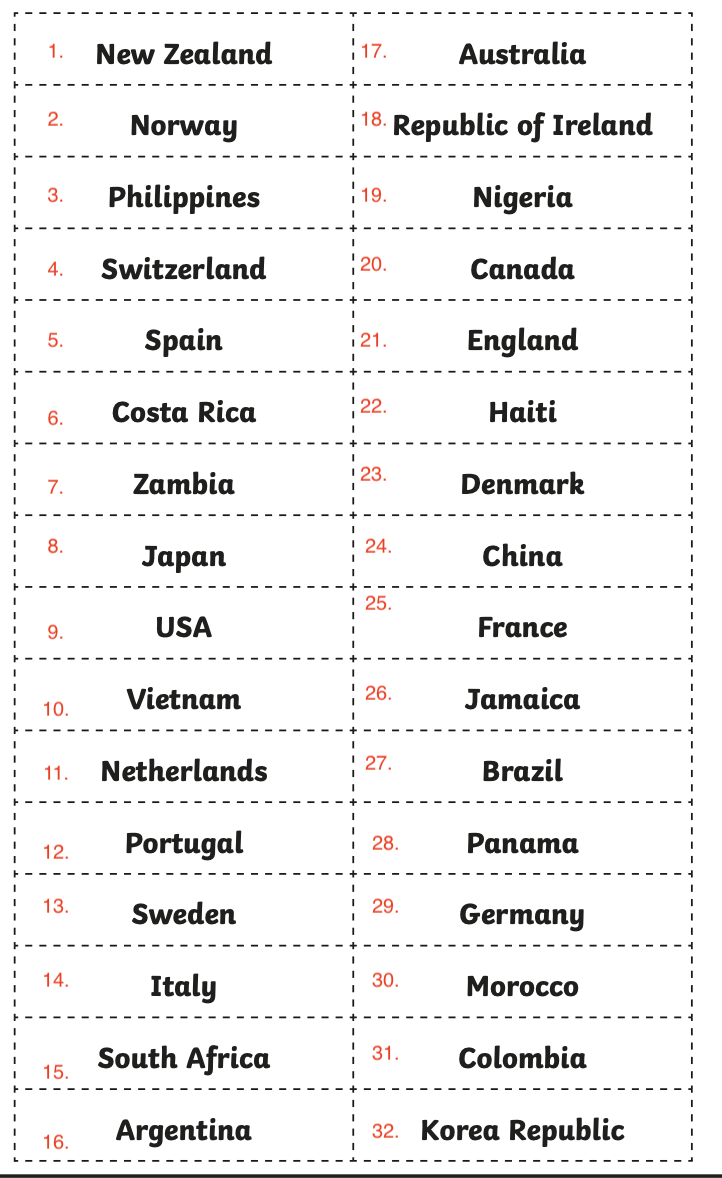

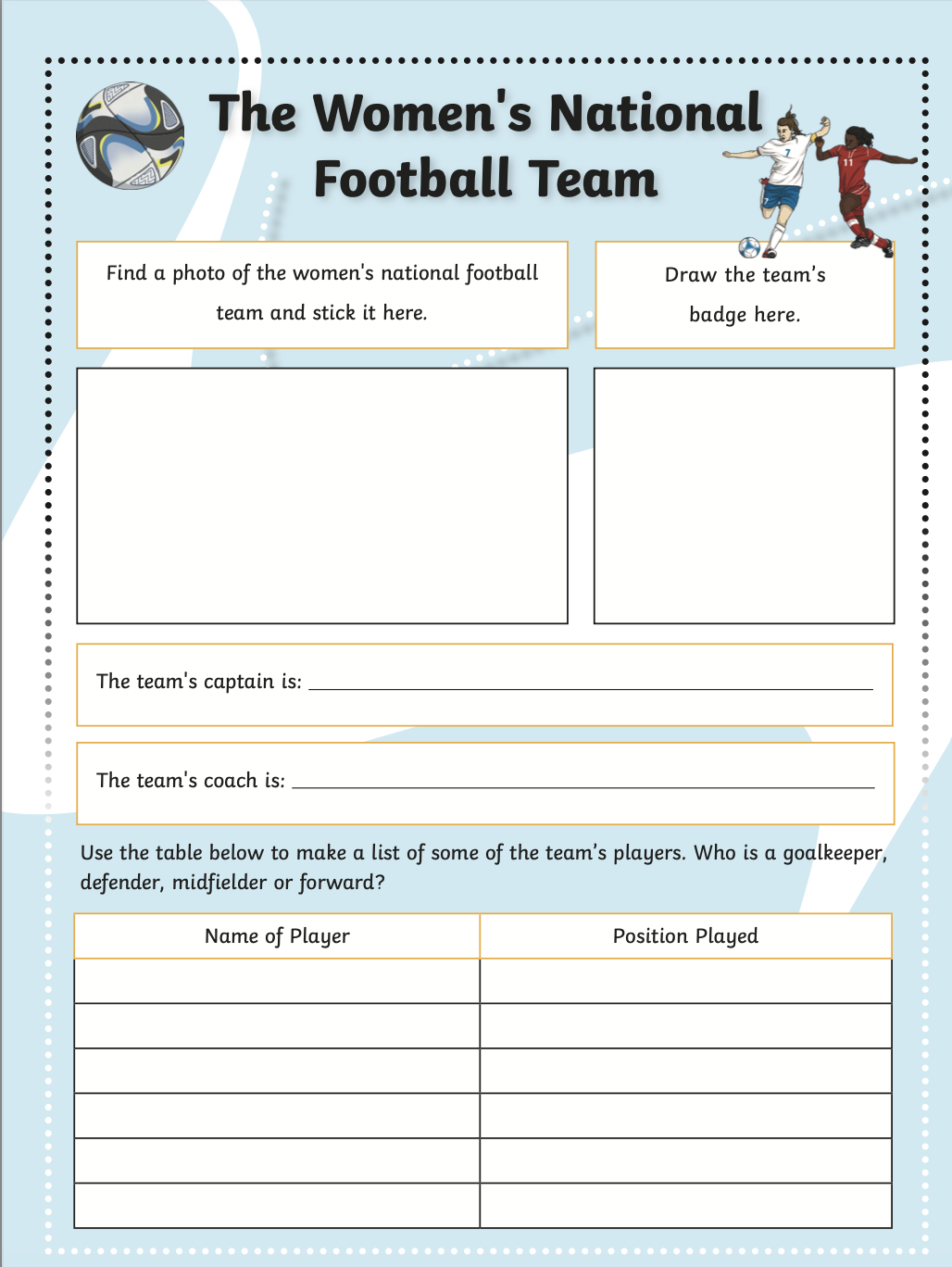



-
Kia ora 7C2,

This week we will be looking at our context with relation to the Women's FIFA World Cup.
https://www.fifa.com/tournaments/womens/womensworldcupEXPLORE / TŪHURA learning intentions:
- We are EXPLORING and researching to understand how hosting the FIFA Women's World Cup can impact our Aotearoa New Zealand Economy.
- We are EXPLORING our rights and responsibilities as citizens of Aotearoa New Zealand through football.
- We are EXPLORING our understanding of the different countries that Aotearoa New Zealand are hosting and how our actions can divide or unite communities.
1) What you liked about their presentation (eg. Raeesa I liked......)
2) Something new that you learned from their presentaion .
Each student will receive feedback from 2 classmates.
Please look at the list below to see who you will be giving feedback to:
-
Kia ora 7C2,

This week we will be looking at our context with relation to the Women's FIFA World Cup.
https://www.fifa.com/tournaments/womens/womensworldcupEXPLORE / TŪHURA learning intentions:
- We are EXPLORING and researching to understand how hosting the FIFA Women's World Cup can impact our Aotearoa New Zealand Economy.
- We are EXPLORING our rights and responsibilities as citizens of Aotearoa New Zealand through football.
- We are EXPLORING our understanding of the different countries that Aotearoa New Zealand are hosting and how our actions can divide or unite communities.
-
Kia ora 7C2,

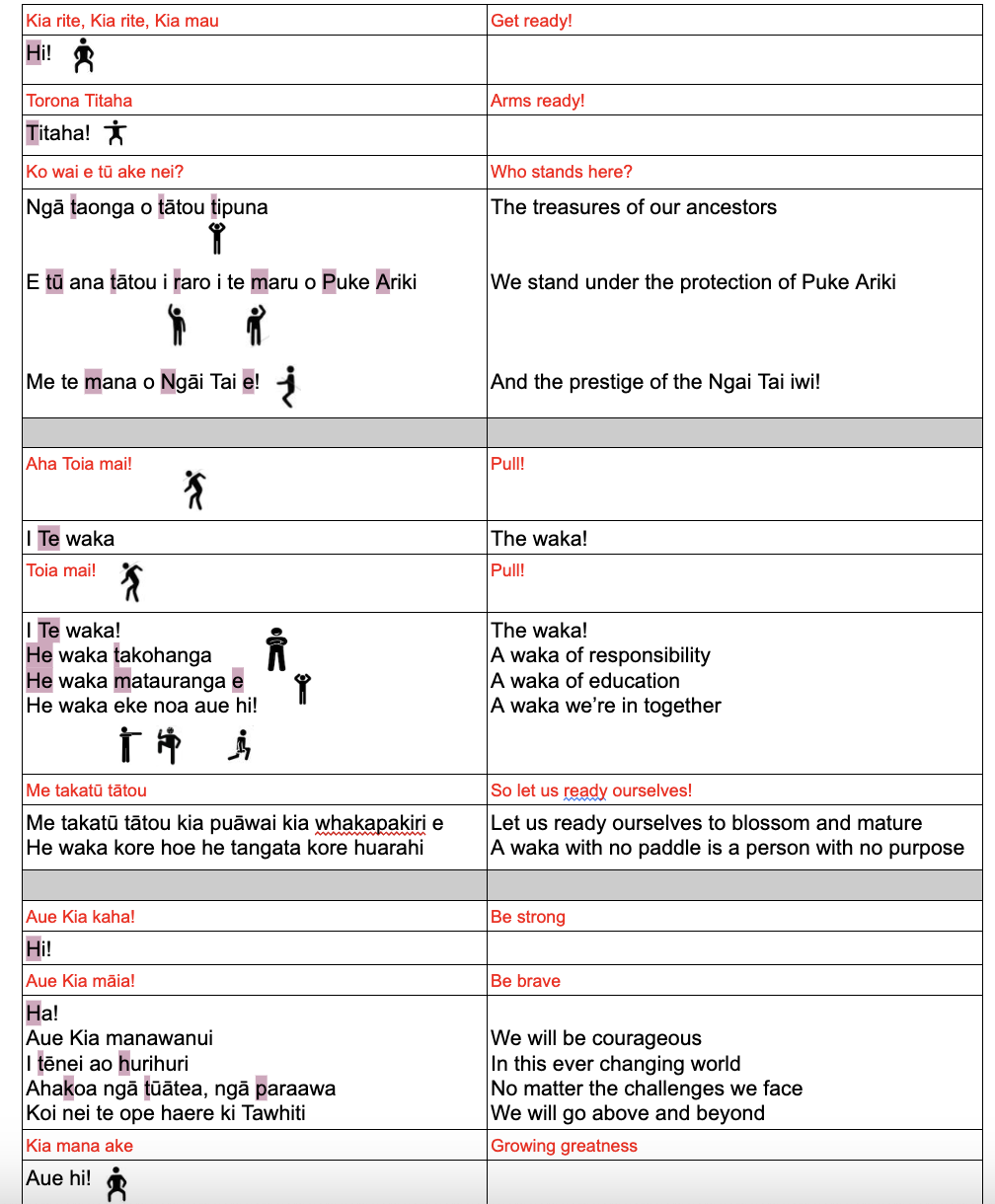

This week we will be looking at our context with relation to the New Zealand 2023 General Election.
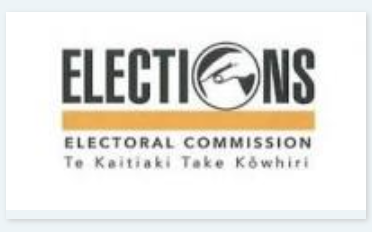
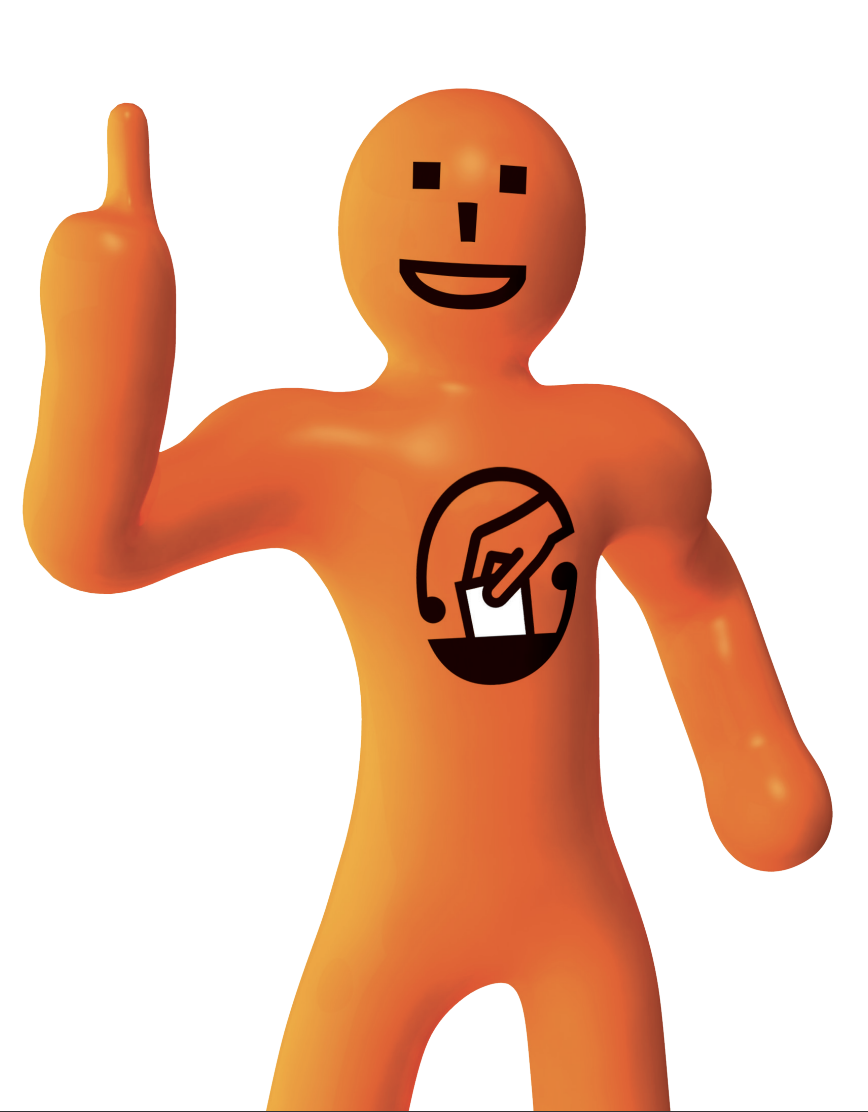

EXPLORE / TŪHURA learning intentions:
- We are EXPLORING and researching to understand how the ways in which leadership of groups is acquired and exercised have consequences for communities and societies
- We are EXPLORING how formal and informal groups make decisions that impact on communities
- We are EXPLORING how people participate individually and collectively in response to community challenges and how our actions can divide or unite communities.
This week, we will only be having 1 session on Tuesday, as Monday is a Teacher Only Day and during our session on Wednesday, you will be attending your second Attitude Presentation in the school theatre : Year 7 - Session 4 - Tackling Technology.
During our session on Tuesday, please work independently to complete the tasks provided, so that you can gain some knowledge about our New Zealand 2023 General Election.
You can complete your activities in any order that you like.
Please complete any unfinished work (except for the Early Finishers activity) during FFR on Friday.
Any work not completed by our session on Monday will be completed with me during Lunch Break on Monday.
Read the facts on the 2 General Election fact sheets below:
Using your Global Studies books, write down 5 interesting facts that you have learned.
You will each be reading your 5 facts to the class and telling me why you selected those 5 facts, when I see you next week.
You may also use the resources on Google Classroom or any other resources of your own to select the 5 facts that you will be writing in your Global Studies books.
Due next week Monday (4/9). Complete as homework or during FFR if not completed in class.
Please also read through the 2 powerpoints on Google Classroom. Some slides have questions on them. Please write down the questions and your answers in your Global Studies Book:
Due next week Monday (4/9). Complete as homework or during FFR if not completed in class.
https://classroom.google.com/u/0/c/NTEyNTk1MzI5MjE1/a/NjE5NjY5MTUyNjMw/details
Complete the vocabulary match-up activity in your Global Studies books:
Due next week Monday (4/9). Complete as homework or during FFR if not completed in class.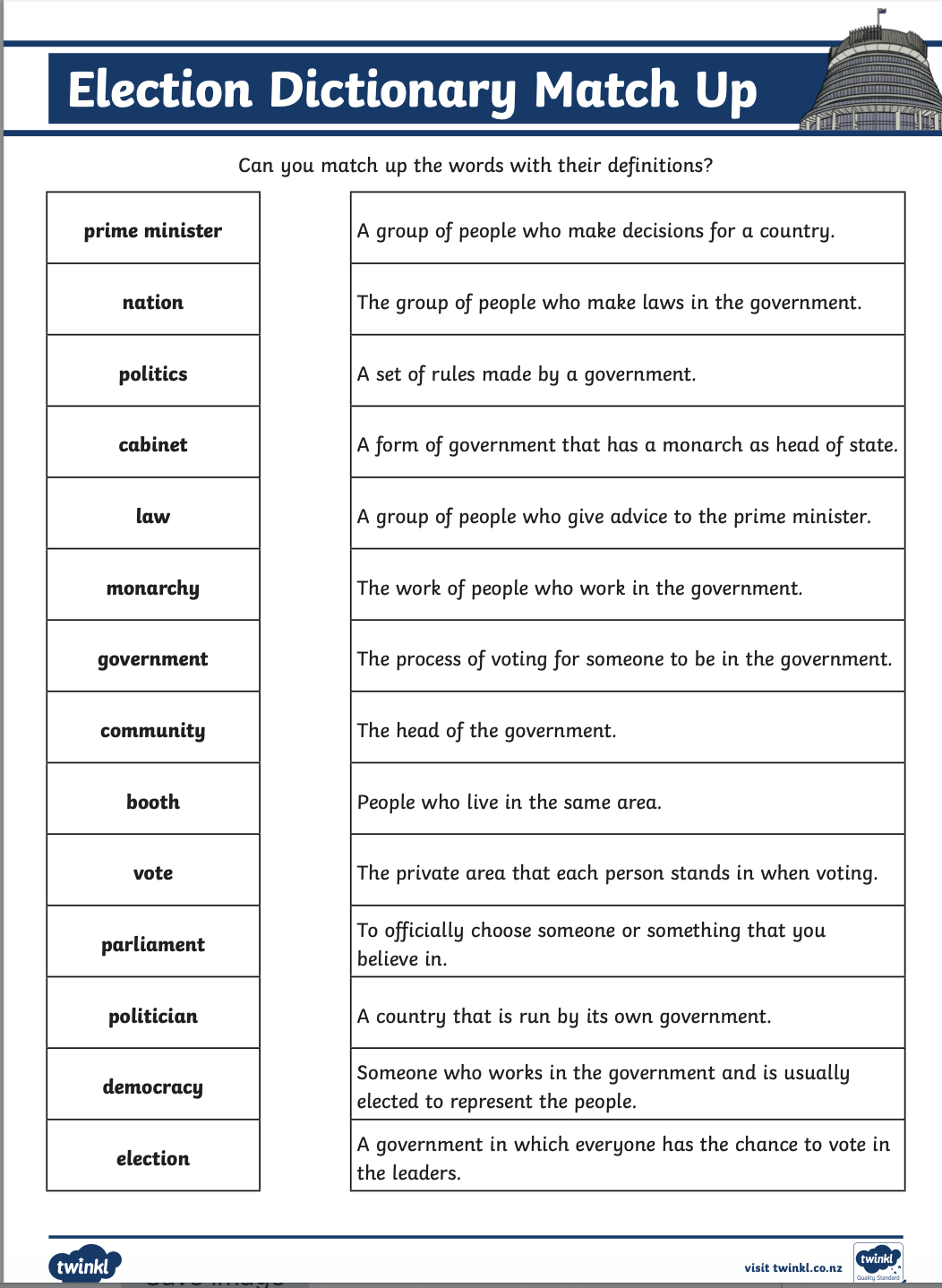
Education Perfect: for Early Finishers
https://app.educationperfect.com/app/dashboard/homework/8714487
Reading Activities for Early Finishers ( DO NOT do this during FFR time) :
Complete the reading activity that you have chosen in your Global Studies Book. Number your work and only complete the answers in your book. No need to copy the questions.
Reading activities are on Google Classroom (Please browse through the readings and choose only 1 reading activity, either Reading Activity A,B or C):
https://classroom.google.com/u/0/c/NTEyNTk1MzI5MjE1/a/NjE5NjY5MTUyNjMw/details -
Kia ora 7C2,



This week we will continue looking at our context with relation to the New Zealand 2023 General Election.

EXPLORE / TŪHURA learning intentions:
- We are EXPLORING and researching to understand how the ways in which leadership of groups is acquired and exercised have consequences for communities and societies
- We are EXPLORING how formal and informal groups make decisions that impact on communities
- We are EXPLORING how people participate individually and collectively in response to community challenges and how our actions can divide or unite communities.
We will also be listening to the last few FIFA presentations.
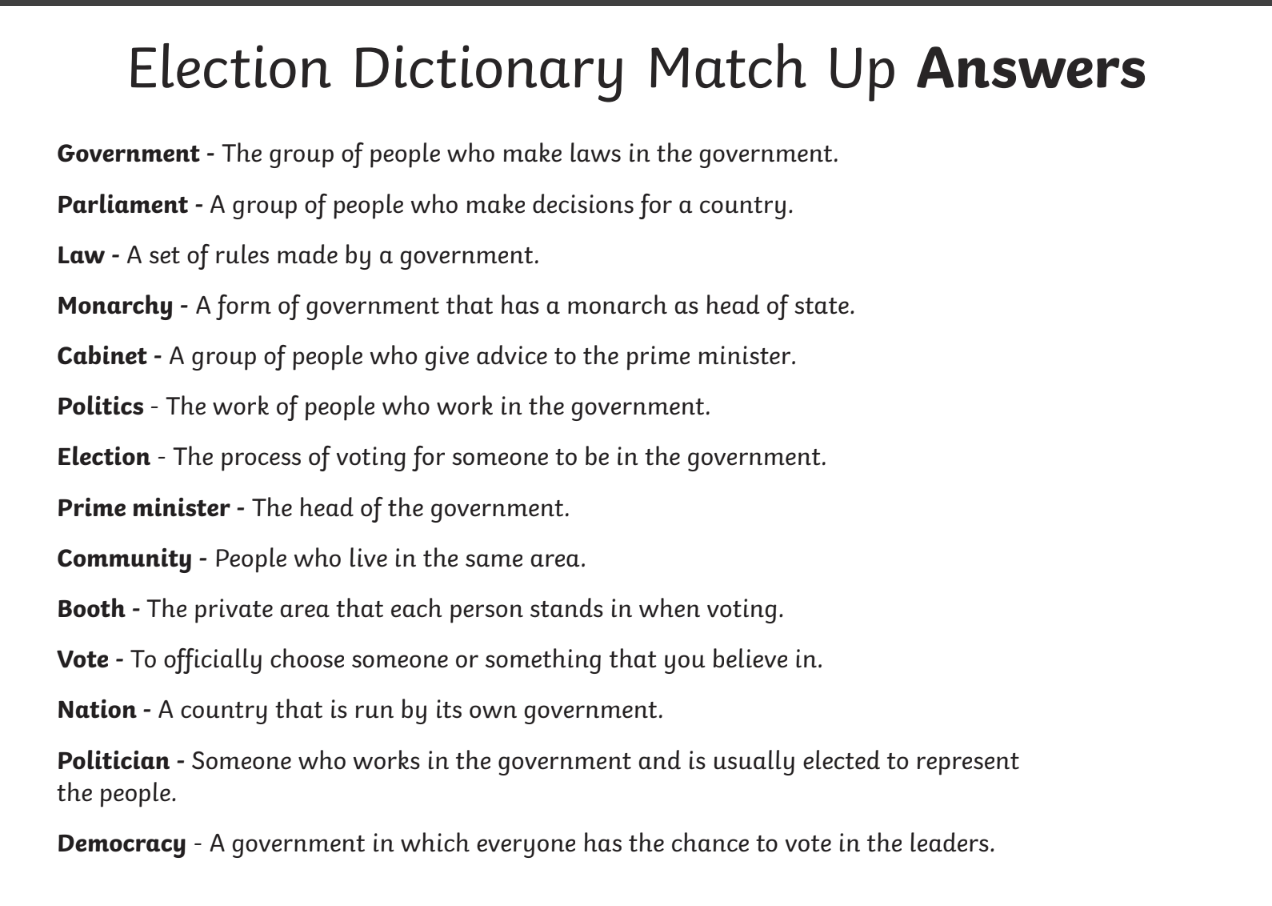
Education Perfect:
https://app.educationperfect.com/app/dashboard/homework/8714487
Reading Activities :
Complete the reading activity that you have chosen in your Global Studies Book. Number your work and only complete the answers in your book. No need to copy the questions.
Reading activities are on Google Classroom (Please browse through the readings and choose only 1 reading activity, either Reading Activity A,B or C):
https://classroom.google.com/u/0/c/NTEyNTk1MzI5MjE1/a/NjE5NjY5MTUyNjMw/details -
Kia ora 7C2,



EXPLORE / TŪHURA learning intentions:
- We are EXPLORING the Women's Suffrage movement and the impact it has had on New Zealand Aotearoa.
FOCUS / ARONGA learning intentions:
- We are FOCUSING our general knowledge through the Weekly Quiz to understand the news and the world around us.
- We are FOCUSING on where suffrage fit in Aotearoa New Zealand's history?
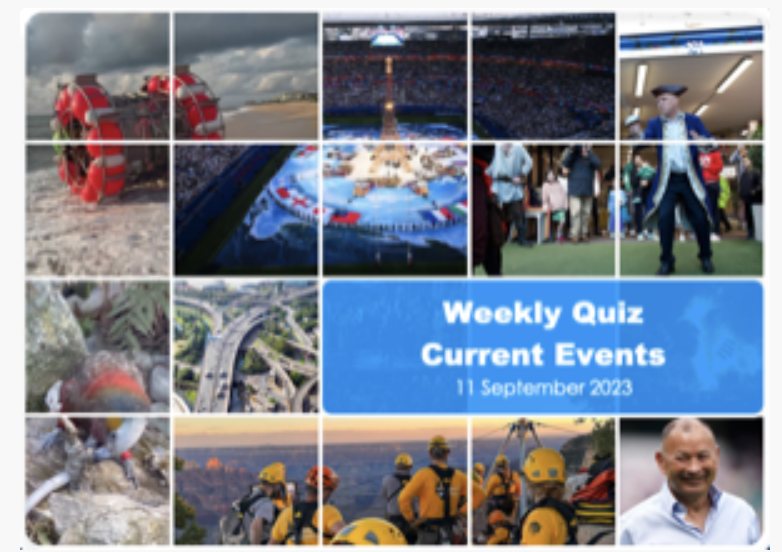
Where does suffrage fit in Aotearoa New Zealand's history?
In the General Election held on 28 November 1893, New Zealand women were able to cast their votes for the first time ever! That right didn’t come easily or without a fight but thanks to the women in the suffrage movement, New Zealand became the first country in the world to give women the vote in 1893. It was a trailblazing victory that would inspire other suffrage campaigns around the world.
It’s hard to imagine now, but until 1893, no single country allowed women to vote and have a political say in how their communities and nations were run. Not one!
That right didn’t come easily or without a fight, but thanks to the women in the suffrage movement, New Zealand became the first country in the world to give women the vote. In the General Election held on 28 November 1893, New Zealand women could cast their votes for the first time ever!
We will be exploring the Women's movement and the right ot vote in New Zealand.
As time went on, Kate Sheppard became the leader and figurehead of the suffrage movement in New Zealand.
In her suffrage work, she not only advocated for the women’s vote but also for:
equality between partners in marriage;
women to play a full role in society;
women to be recognised for their
talents and abilities;
women to be able to live an active life.
Check out the 'Exploring Women's Suffrage Activity Cards' (on Google Classroom) which are linked directly to the PowerPoint. You will be working independently to explore various aspects of the suffrage story across the curriculum.
-
Kia ora 7C2,


EXPLORE / TŪHURA learning intentions:
- We are EXPLORING the New Zealand Government.
FOCUS / ARONGA learning intentions:
- We are FOCUSING on developing our research skills, using skimming and scanning.
- We are FOCUSING on the structure of the New Zealand government.
- We are FOCUSING on the New Zealand political parties.
Please refer to the scavenger hunt information cards on Google Classroom.


Mrs M. Naidoo will explain the work to you.
Please work neatly and ensure that your work is named and nicely coloured. All puzzles will be displayed next term.
Please refer to Google Classroom for all the scavenger hunt fact cards.
Incomplete work to be completed during FFR.. -
Kia ora 7C2,
Welcome to Term 4. I hope that you've all had an awesome break!

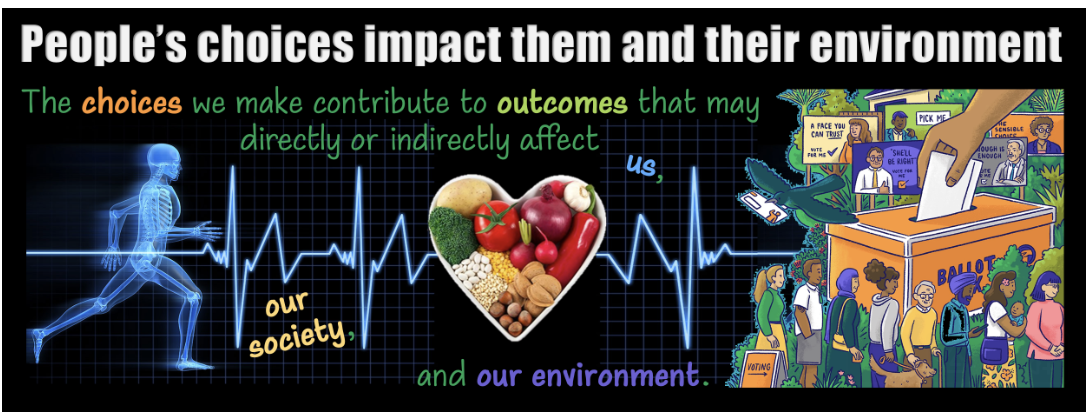
EXPLORE / TŪHURA learning intentions:
- We are EXPLORING the New Zealand Government.
FOCUS / ARONGA learning intentions:
- We are FOCUSING on developing our research skills, using skimming and scanning.
- We are FOCUSING on what is Policy Writing.
- We are FOCUSING on how to write and structure a policy.
I will be away for our sessions this week. Please refer to Google Classroom. I have created a google slide for each student on Writing Policies. Please work independently to complete the slides. Continue to work on this during FFR. I will check your work and discuss answers next week Monday.
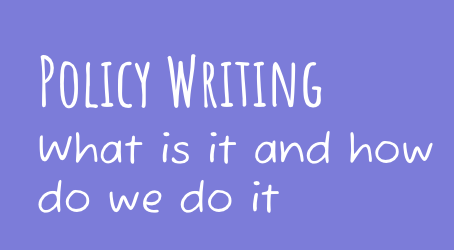
-
Kia ora 7C2,
This week we will focus on gaining a better understanding of the New Zealand elections process, and how people's choices impact them and the environment.


EXPLORE / TŪHURA learning intentions:
- We are EXPLORING the New Zealand Government.
FOCUS / ARONGA learning intentions:
- We are FOCUSING on developing our research skills, using skimming and scanning.
- We are FOCUSING on the elections.
- We are FOCUSING on how the elections process works.
As usual, we will begin each session on Monday with the weekly quiz.
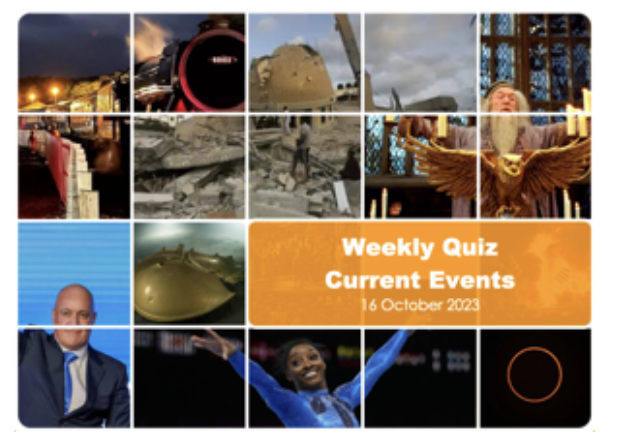
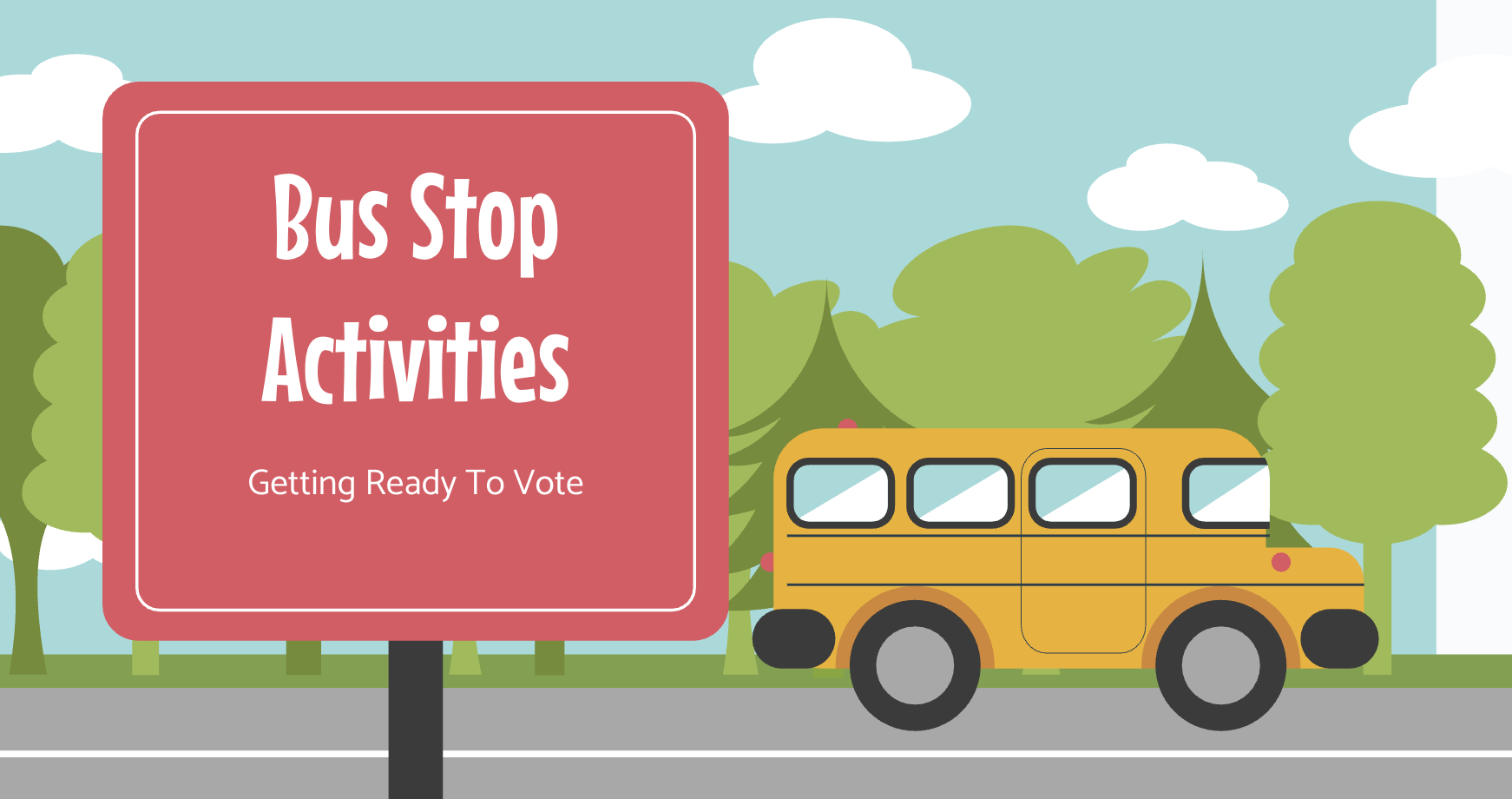
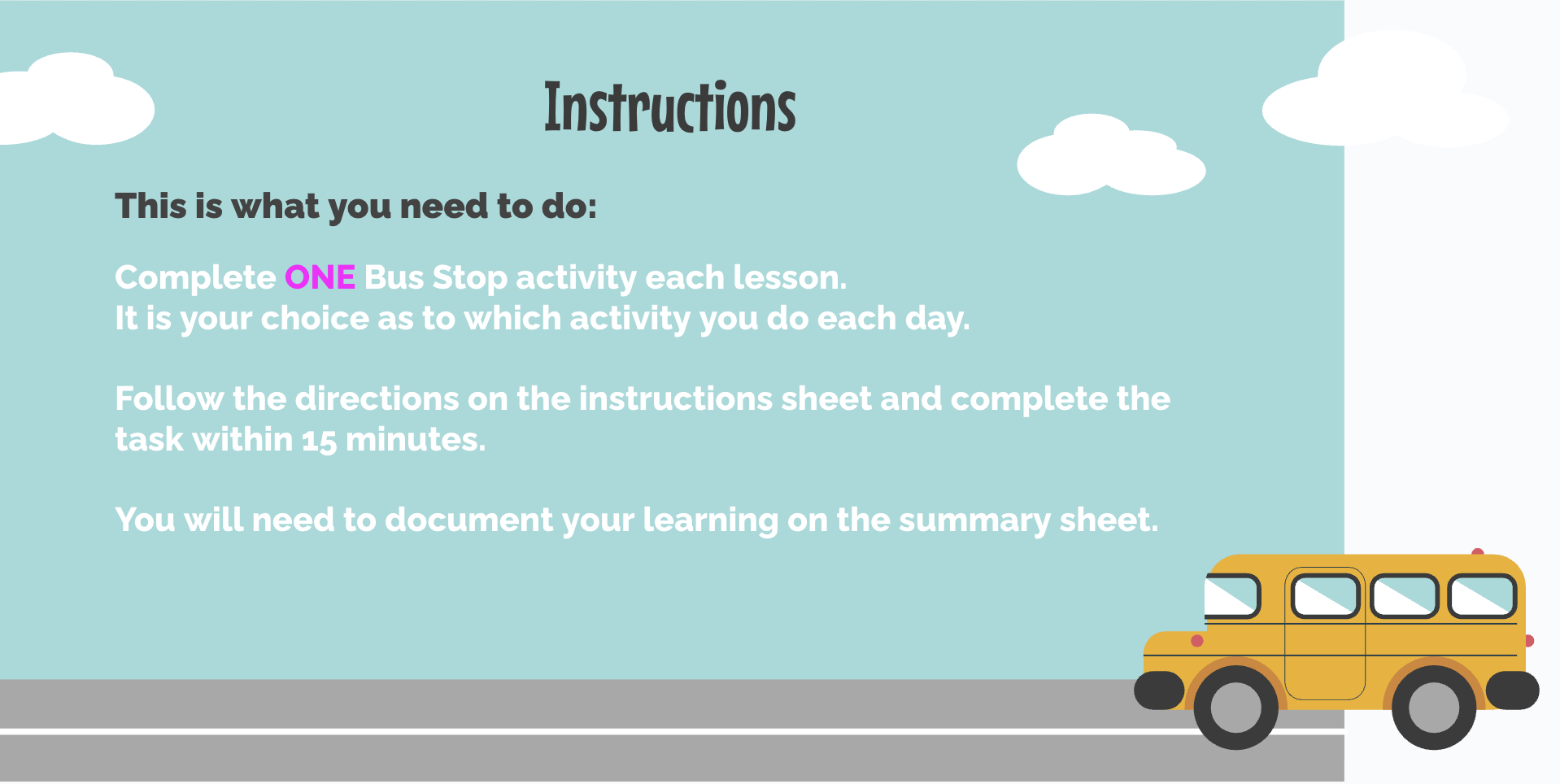
Please refer to Google Classroom for all your resources to support your work for this week.
https://classroom.google.com/u/0/w/NTEyNTk1MzI5MjE1/tc/NTkyNDYyMzkzMzI5
A reminder that any incomplete work needs to be completed during FFR time on Friday. -
Kia ora 7C2,

Fighting for the eight-hour working day
Labour Day commemorates the struggle for an eight-hour working day. New Zealand workers were among the first in the world to claim this right when, in 1840, the carpenter Samuel Parnell won an eight-hour day in Wellington. Labour Day was first celebrated in New Zealand on 28 October 1890, when several thousand trade union members and supporters attended parades in the main centres. Government employees were given the day off to attend the parades and many businesses closed for at least part of the day.






Homework activities for this week.
Please read and complete slides on Google classroom.
This work will support you with your second assessment.
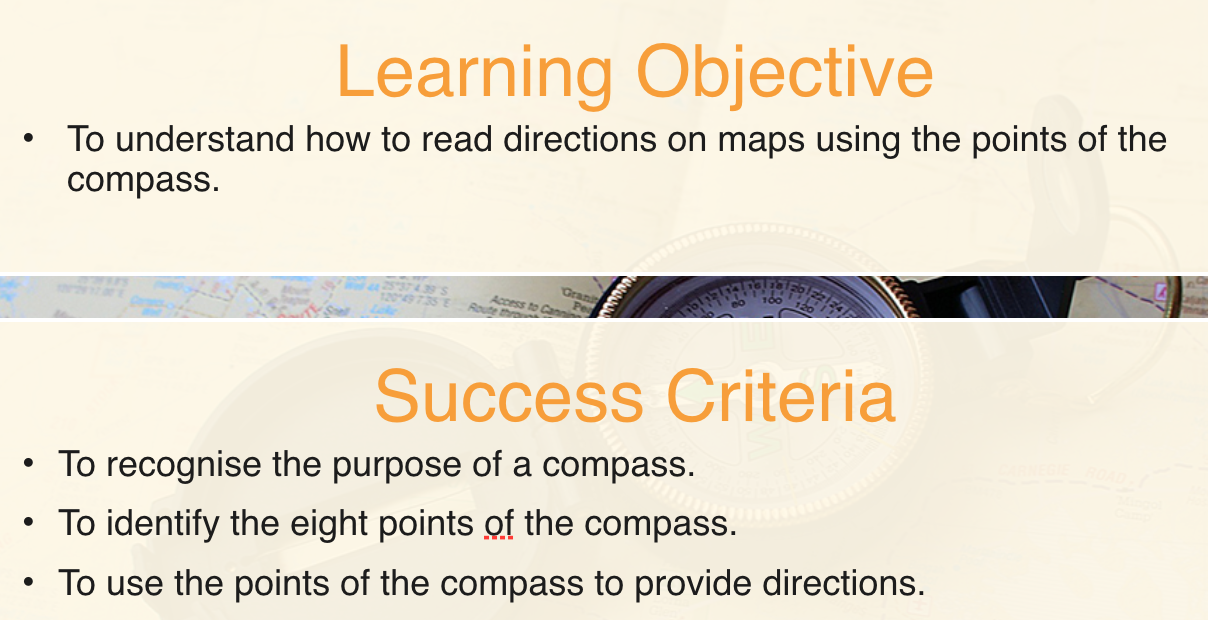
Activities:
Starting on a new page in your books, write down the heading Mapping Skills and Direction.Copy the Learning Objective and Success Criteria.
Next answer the questions from the slide below in your Global Studies book.
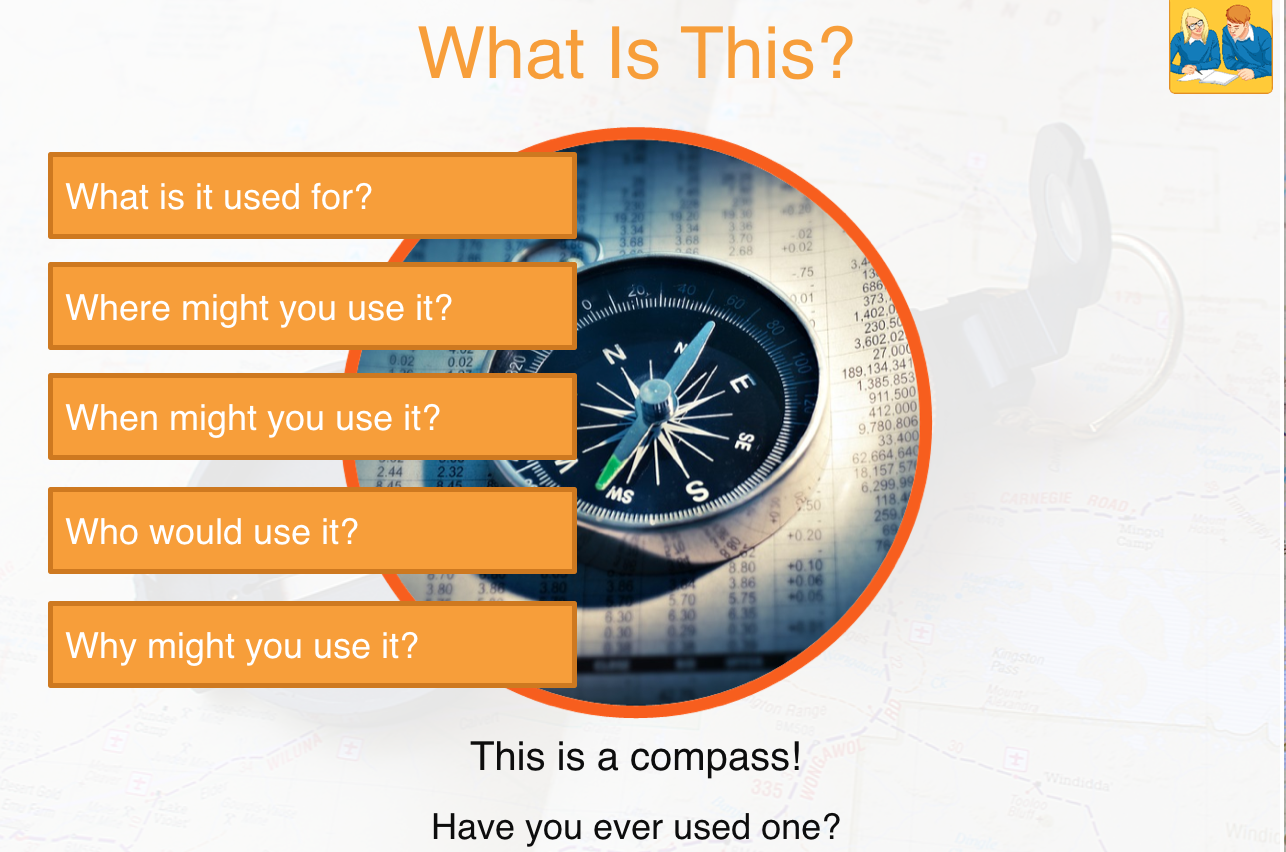
For your information,
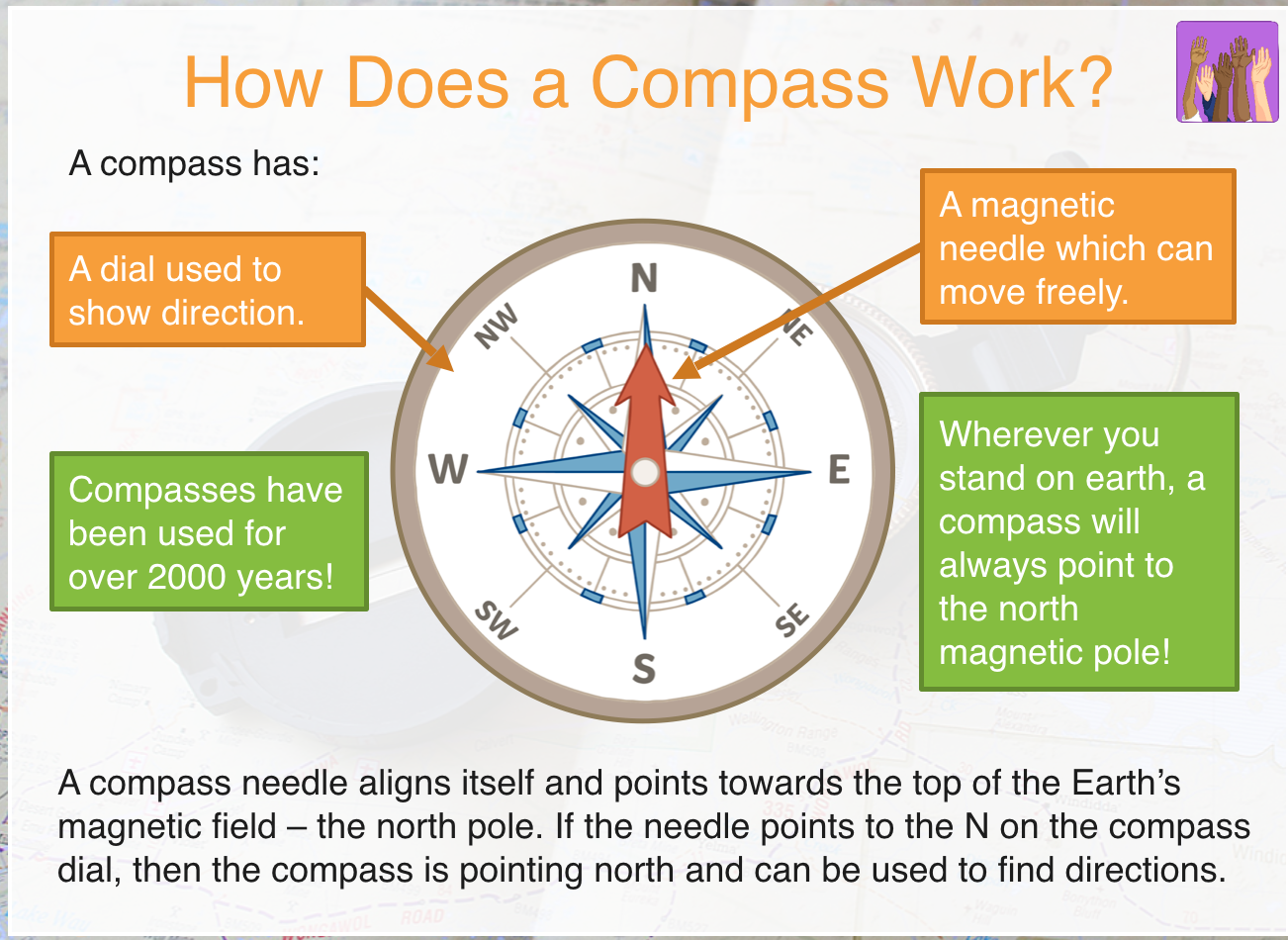

Copy the compass points image below in your book and label the compass points.


Activities:
Weekly quiz
-
Kia ora 7C2,
This week we will focus on Tourism: The Impact of People and Places, and how people's choices impact them and the environment.


EXPLORE / TŪHURA learning intentions:
- We are EXPLORING Tourism and the impact of people and places.
FOCUS / ARONGA learning intentions:
- We are FOCUSING on what is tourism
- We are FOCUSING on growth of tourist links
- We are FOCUSING on future tourism
- We are FOCUSING on ecotourism
- We are FOCUSING on impacts of tourism
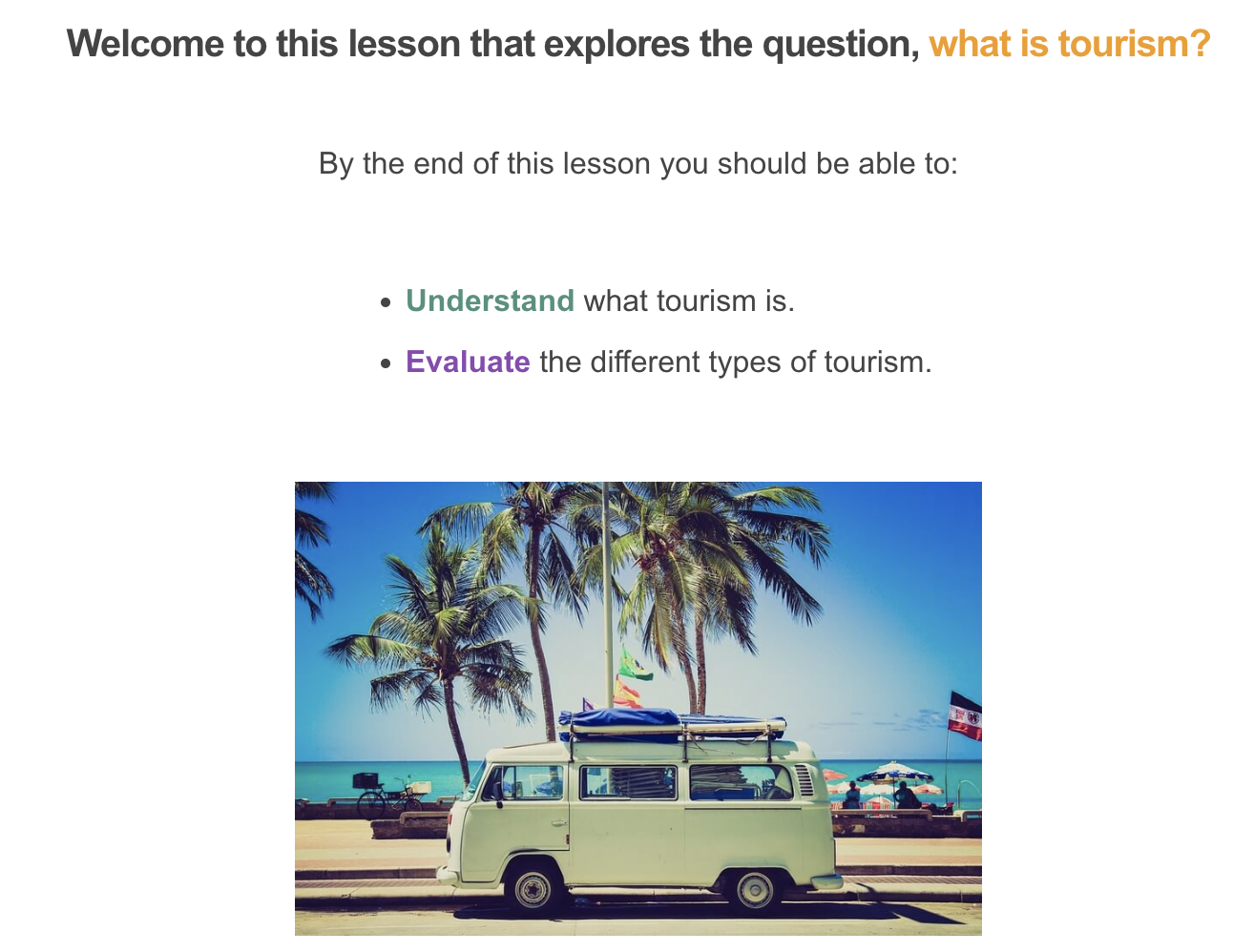 During your session on Monday, you will all be working independently on your Education Perfect tasks.We will be discussing the tasks,during session 1 on Tuesday 31/10.Early finishers can start working on the mapping skills activities on Education Perfect.Please do not start the mapping skills activities until you have completed all the Tourism tasks.Links and further instructions on Google Classroom.Tuesday 31/10
During your session on Monday, you will all be working independently on your Education Perfect tasks.We will be discussing the tasks,during session 1 on Tuesday 31/10.Early finishers can start working on the mapping skills activities on Education Perfect.Please do not start the mapping skills activities until you have completed all the Tourism tasks.Links and further instructions on Google Classroom.Tuesday 31/10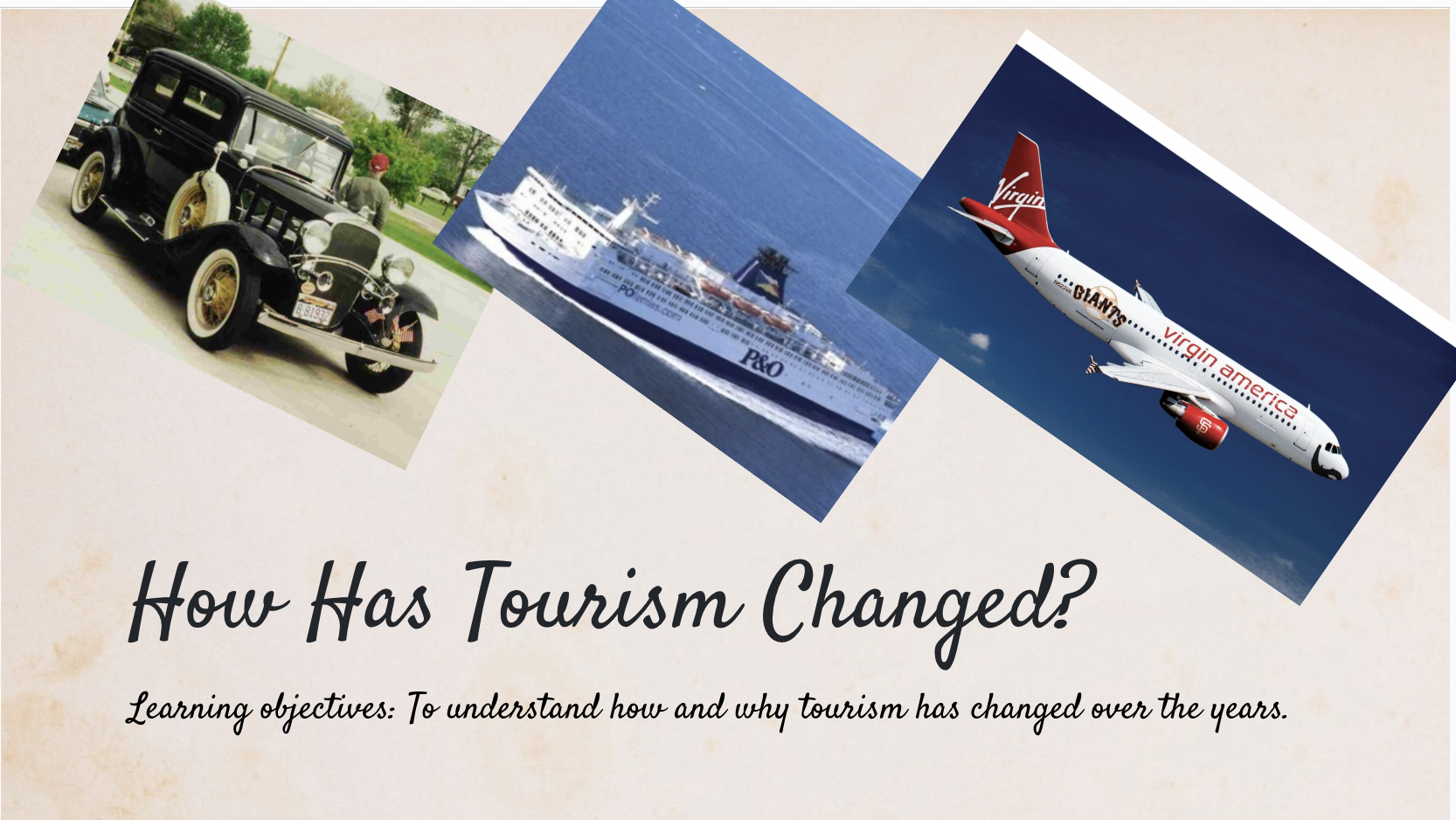 After completing all your Tourism activities on Education Perfect, please go to Google Glassroom to complete the slides on Tourism.
After completing all your Tourism activities on Education Perfect, please go to Google Glassroom to complete the slides on Tourism. -
Kia ora 7C2,
This week we will be focussing on our Global Studies Assessment 2.
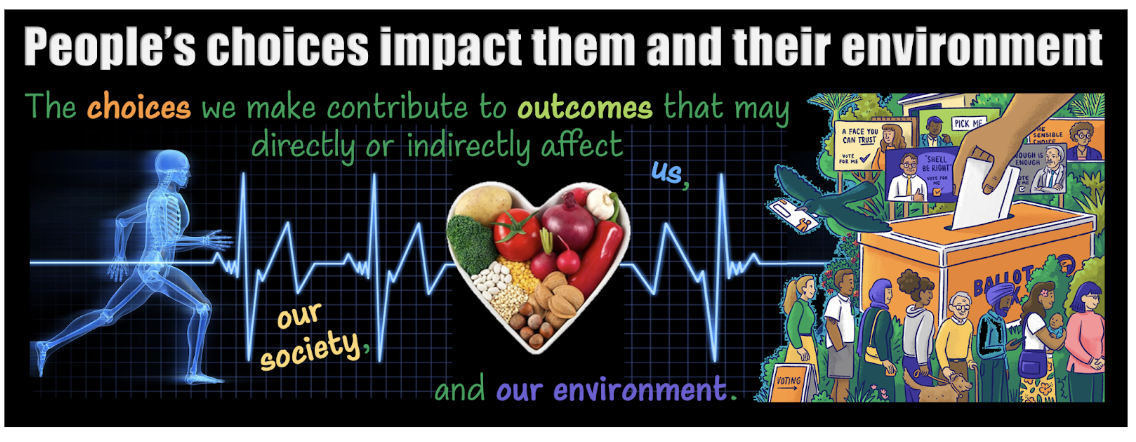
This term our focus is on “People’s choices impact them and their environment”.
Learning Intentions:
Students will be able to gain an understanding of how the community views its natural resources currently and in the past.
Students will be able to identify the value of natural resources for the community
Students will be able to emphasize the connection between conservation, ecotourism, and sustainable economic development.
Success Criteria:
Students can identify the different ways in which the environment has changed the landscape due to tourism.
Students can illustrate the economic/exchange value of the area’s natural resources.
Students can illustrate the economic/exchange potential of different natural resources practices for the future..
Global Studies:
Achievement objectives:
Individuals, communities, and societies experience and manage scarcity in different ways and make trade-offs with differing consequences.
Criteria
Working TOWARDS
Working AT
Working ABOVE
Working BEYOND
Applying mapping features
You have yet to apply mapping features to demonstrate your understanding of key places in Aotearoa
You have applied mapping features to demonstrate your limited understanding of key places in Aotearoa
You have applied mapping features to demonstrate that you have some understanding of key places in Aotearoa
You have applied mapping features to demonstrate that you have an understanding of key places in Aotearoa in both English and Te Reo Māori
Mapping Interpretation
You have attempted to identify some geographical features/land on a map related to tourism in Aotearoa
You have identified some geographical features/land on a map
related to tourism in Aotearoa
You have accurately identified geographical features/land use on a map related to tourism in Aotearoa
You have accurately identified important geographical features/land on a map
related to tourism in Aotearoa and explained in detail the impacts of tourism change and sustainability
Communicating research findings
You have attempted to communicate some facts from a source and attempted to use your own words
You have communicated some facts from a source and attempted to use your own words
You have communicated some relevant facts from a source and attempted to use your own words
You have communicated relevant facts from a source and attempted to use your own words
Accuracy in Writing
You have made errors in grammar, spelling and/or punctuation and these are intrusive at times, consequently the reader has to infer meaning
You have made some errors, but minimal reader inference is needed as meaning is mostly clear
You have carefully edited your writing to ensure you have few intrusive errors and meaning is consistently clear
You have carefully edited your writing to ensure you have no intrusive errors and meaning is consistently clear
Time Management
You have yet to complete and submit your assessment
You have submitted your assessment late
You have submitted your assessment by the due date
You have submitted your assessment by the due date
Overall Grade
Working TOWARDS
Working AT
Working ABOVE
Working BEYOND
Closing Karakia Whakamutunga (closing)
Kia Whakairia te tapu Restrictions are moved aside
Kia watea ai te ara So the pathway is clear
Kia tūruki whakataha ai To return to everyday activities
Kia tūruki whakataha ai To return to everyday activities
Hui e! Tāiki e! Enriched, unified and blessed
-
Kia ora 7C2,

This week we will be focussing on our Global Studies Assessment 2.

This term our focus is on “People’s choices impact them and their environment”.
Learning Intentions:
Students will be able to gain an understanding of how the community views its natural resources currently and in the past.
Students will be able to identify the value of natural resources for the community
Students will be able to emphasize the connection between conservation, ecotourism, and sustainable economic development.
Success Criteria:
Students can identify the different ways in which the environment has changed the landscape due to tourism.
Students can illustrate the economic/exchange value of the area’s natural resources.
Students can illustrate the economic/exchange potential of different natural resources practices for the future..
Global Studies:
Achievement objectives:
Individuals, communities, and societies experience and manage scarcity in different ways and make trade-offs with differing consequences.

Your mapping activity will be graded as follows:
Closing Karakia Whakamutunga (closing)
Kia Whakairia te tapu Restrictions are moved aside
Kia watea ai te ara So the pathway is clear
Kia tūruki whakataha ai To return to everyday activities
Kia tūruki whakataha ai To return to everyday activities
Hui e! Tāiki e! Enriched, unified and blessed
-
Kia ora 7C2,

FOCUS / ARONGA learning intentions:
- We are FOCUSING on applying our mapping skills.
- We are FOCUSING on explaining directions, using a map.
- We are FOCUSING on following directions and answering questions involving map work.
Success Criteria: I can/have...
- Follow directions.
- Apply my mapping skills.
Activities:
- Complete the Hopeville map challenge on Google Classroom.
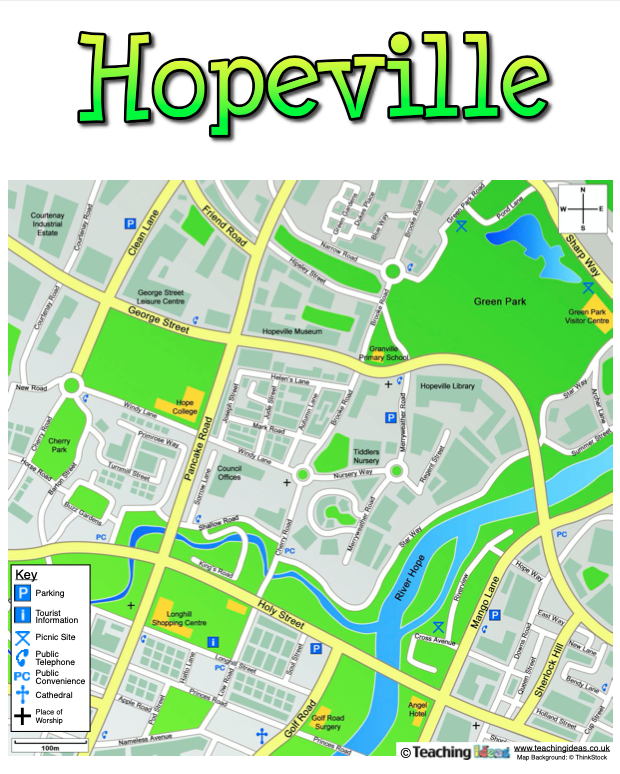
Refer to challenge cards and Map on our 7C2 Google classroom.
Complete and answers the questions with your buddy. -
Kia ora 7C2,

FOCUS / ARONGA learning intentions:
- We are FOCUSING on applying our mapping skills.
- We are FOCUSING on understanding how cultural practices reflect and express people’s
customs, traditions, and values.
We are FOCUSING on how places influence people and people influence places.
- We are FOCUSING on how the status of Māori as tangata whenua is significant for
communities in New Zealand.
Success Criteria: I can/have...
- Apply my mapping skills.
- Explain how cultural practices reflect and express people’s customs, traditions, and values.
- Discuss how places influence people and people influence places.
- Explain how the status of Māori as tangata whenua is significant for communities in New Zealand.
Activities:
This activity will be completed in small groups.
- Students to cut out puzzle pieces of map of New Zealand,
- Read the puzzle piece questions, and then use the fact cards to locate the answers.
- Complete puzzle pieces and then colour them and present them to a high standard.
- Paste puzzle pieces together to resemble map of NZ.
- Complete fact cards.
- Label significant places on map of NZ.
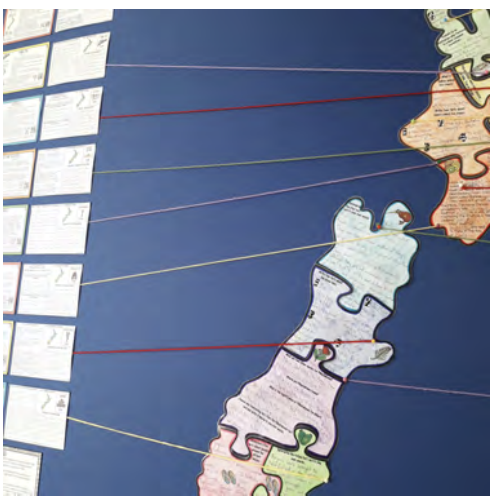
Each card features:
- The English and te reo place name.
- Fast facts
- The location on a NZ map
- Must see attractions
- A ‘Did you know?’ fact
- A QR code with further visual information
The follow up activity post cards include three different types of activities:
- Summarise
- Short answer questions
- Cloze reading activities

Resources:
- Whangarei: https://teara.govt.nz/en/whangarei-tribes/page-3
- Auckland: https://www.aucklandnz.com/visit
- Hamilton: https://hamiltongardens.co.nz/
- Rotorua: https://www.rotoruanz.com/media/photo-library/video-library/
- Tauranga: https://www.bayofplentynz.com/discover/tauranga
- Gisborne: https://www.nzherald.co.nz/travel-video/news/video.cfm?c_id=1503083&gal_cid=1503083&gallery_id=187879
- Napier-Hastings: https://www.hawkesbaynz.com/see-and-do/art-design-and-culture/the-maori-culture-guide/cultural-sites/pania-of-the-reef/
- New Plymouth - https://www.doc.govt.nz/parks-and-recreation/places-to-go/taranaki/places/egmont-national-park/things-to-do/tracks/mount-taranaki-summit-track/
- Whanganui - https://youtu.be/ilmXmcbc9DA
- Palmerston North - https://youtu.be/S2j5TnovppY
- Wellington: https://youtu.be/-plOMNojHkc
- Nelson: https://www.worldofwearableart.com/museum/
- Christchurch: https://theculturetrip.com/pacific/new-zealand/articles/20-must-visit-attractions-in-christchurch-new-zealand/
- Timaru: https://www.timaru.govt.nz/community/recreation/parks-and-sports-facilities/popular-parks/caroline-bay
- Dunedin: https://youtu.be/rMV3PH-wio8
- Invercargill: https://www.transportworld.co.nz/
Closing Karakia Whakamutunga
Kia Whakairia te tapu Restrictions are moved aside
Kia watea ai te ara So the pathway is clear
Kia tūruki whakataha ai To return to everyday activities
Kia tūruki whakataha ai To return to everyday activities
Hui e! Tāiki e! Enriched, unified and blessed
-
Kia ora 7C2,
We will continue with our mapping skills activity this week.

FOCUS / ARONGA learning intentions:
- We are FOCUSING on applying our mapping skills.
- We are FOCUSING on understanding how cultural practices reflect and express people’s
customs, traditions, and values.
We are FOCUSING on how places influence people and people influence places.
- We are FOCUSING on how the status of Māori as tangata whenua is significant for
communities in New Zealand.
Success Criteria: I can/have...
- Apply my mapping skills.
- Explain how cultural practices reflect and express people’s customs, traditions, and values.
- Discuss how places influence people and people influence places.
- Explain how the status of Māori as tangata whenua is significant for communities in New Zealand.
Activities:
This activity will be completed in small groups.
- Students to cut out puzzle pieces of map of New Zealand,
- Read the puzzle piece questions, and then use the fact cards to locate the answers.
- Complete puzzle pieces and then colour them and present them to a high standard.
- Paste puzzle pieces together to resemble map of NZ.
- Complete fact cards.
- Label significant places on map of NZ.

Each card features:
- The English and te reo place name.
- Fast facts
- The location on a NZ map
- Must see attractions
- A ‘Did you know?’ fact
- A QR code with further visual information
The follow up activity post cards include three different types of activities:
- Summarise
- Short answer questions
- Cloze reading activities
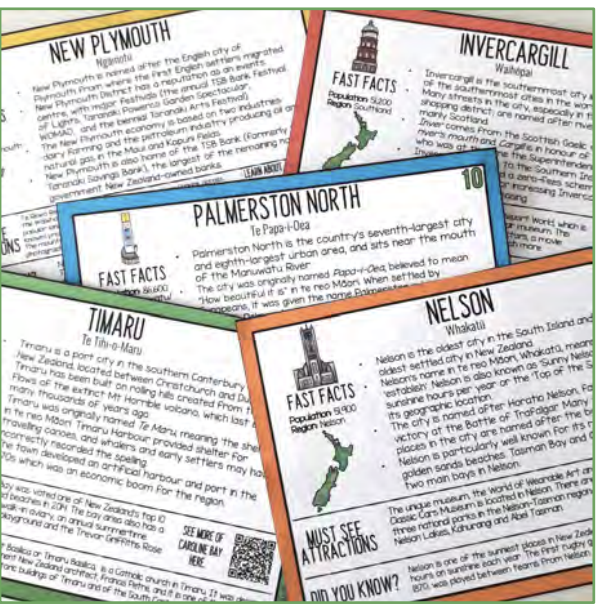
Resources:
- Whangarei: https://teara.govt.nz/en/whangarei-tribes/page-3
- Auckland: https://www.aucklandnz.com/visit
- Hamilton: https://hamiltongardens.co.nz/
- Rotorua: https://www.rotoruanz.com/media/photo-library/video-library/
- Tauranga: https://www.bayofplentynz.com/discover/tauranga
- Gisborne: https://www.nzherald.co.nz/travel-video/news/video.cfm?c_id=1503083&gal_cid=1503083&gallery_id=187879
- Napier-Hastings: https://www.hawkesbaynz.com/see-and-do/art-design-and-culture/the-maori-culture-guide/cultural-sites/pania-of-the-reef/
- New Plymouth - https://www.doc.govt.nz/parks-and-recreation/places-to-go/taranaki/places/egmont-national-park/things-to-do/tracks/mount-taranaki-summit-track/
- Whanganui - https://youtu.be/ilmXmcbc9DA
- Palmerston North - https://youtu.be/S2j5TnovppY
- Wellington: https://youtu.be/-plOMNojHkc
- Nelson: https://www.worldofwearableart.com/museum/
- Christchurch: https://theculturetrip.com/pacific/new-zealand/articles/20-must-visit-attractions-in-christchurch-new-zealand/
- Timaru: https://www.timaru.govt.nz/community/recreation/parks-and-sports-facilities/popular-parks/caroline-bay
- Dunedin: https://youtu.be/rMV3PH-wio8
- Invercargill: https://www.transportworld.co.nz/
Closing Karakia Whakamutunga
Kia Whakairia te tapu Restrictions are moved aside
Kia watea ai te ara So the pathway is clear
Kia tūruki whakataha ai To return to everyday activities
Kia tūruki whakataha ai To return to everyday activities
Hui e! Tāiki e! Enriched, unified and blessed

